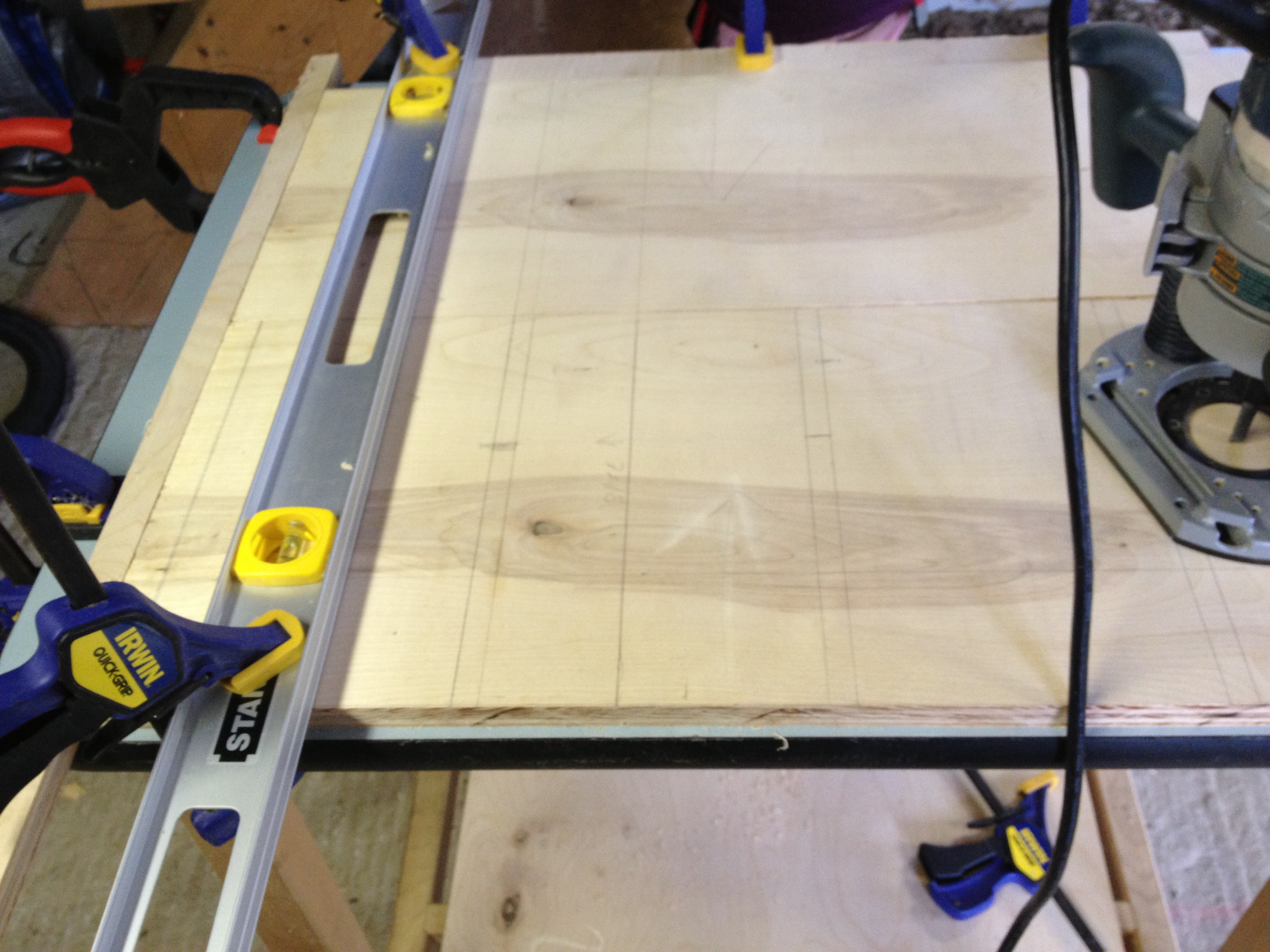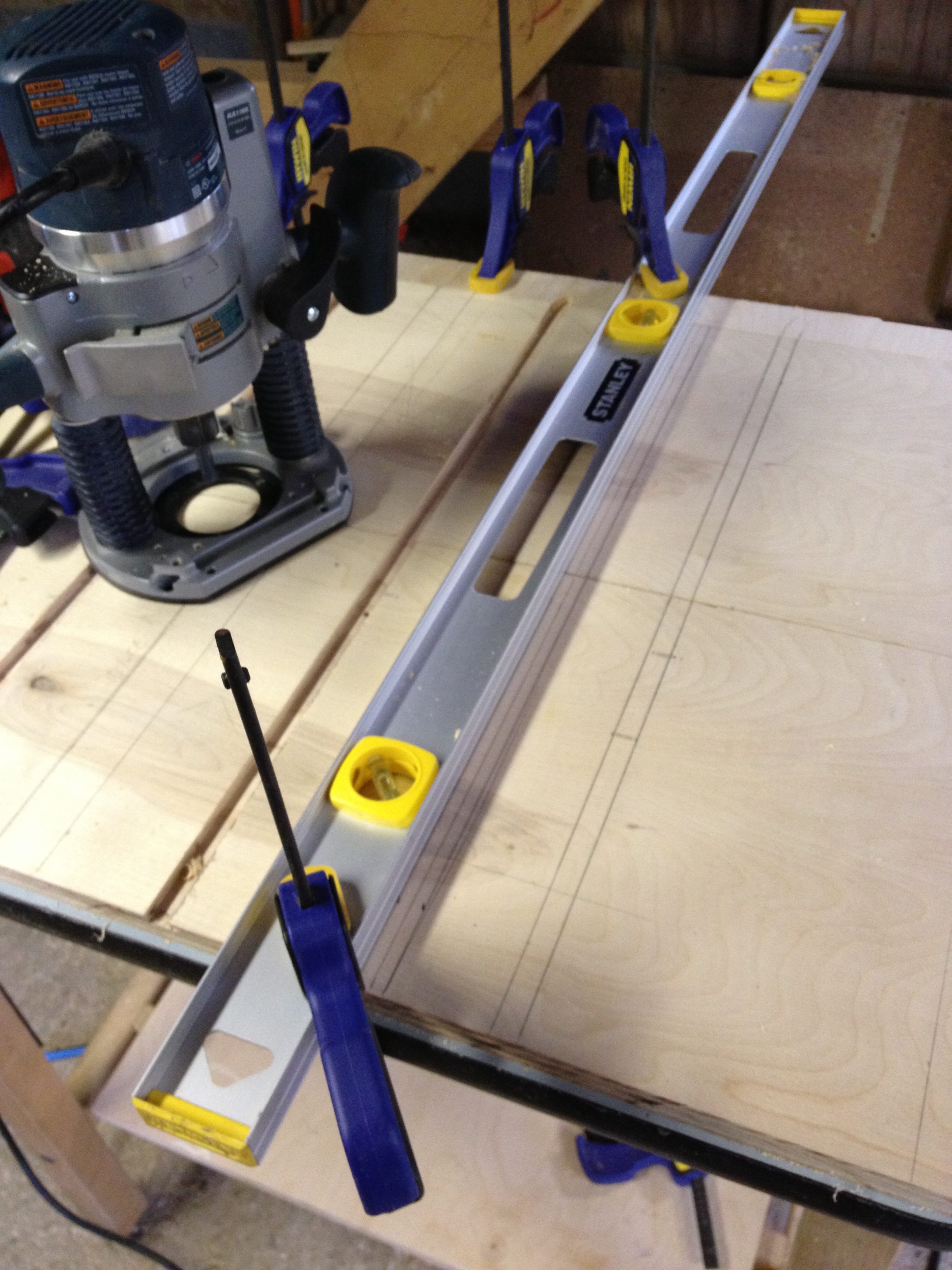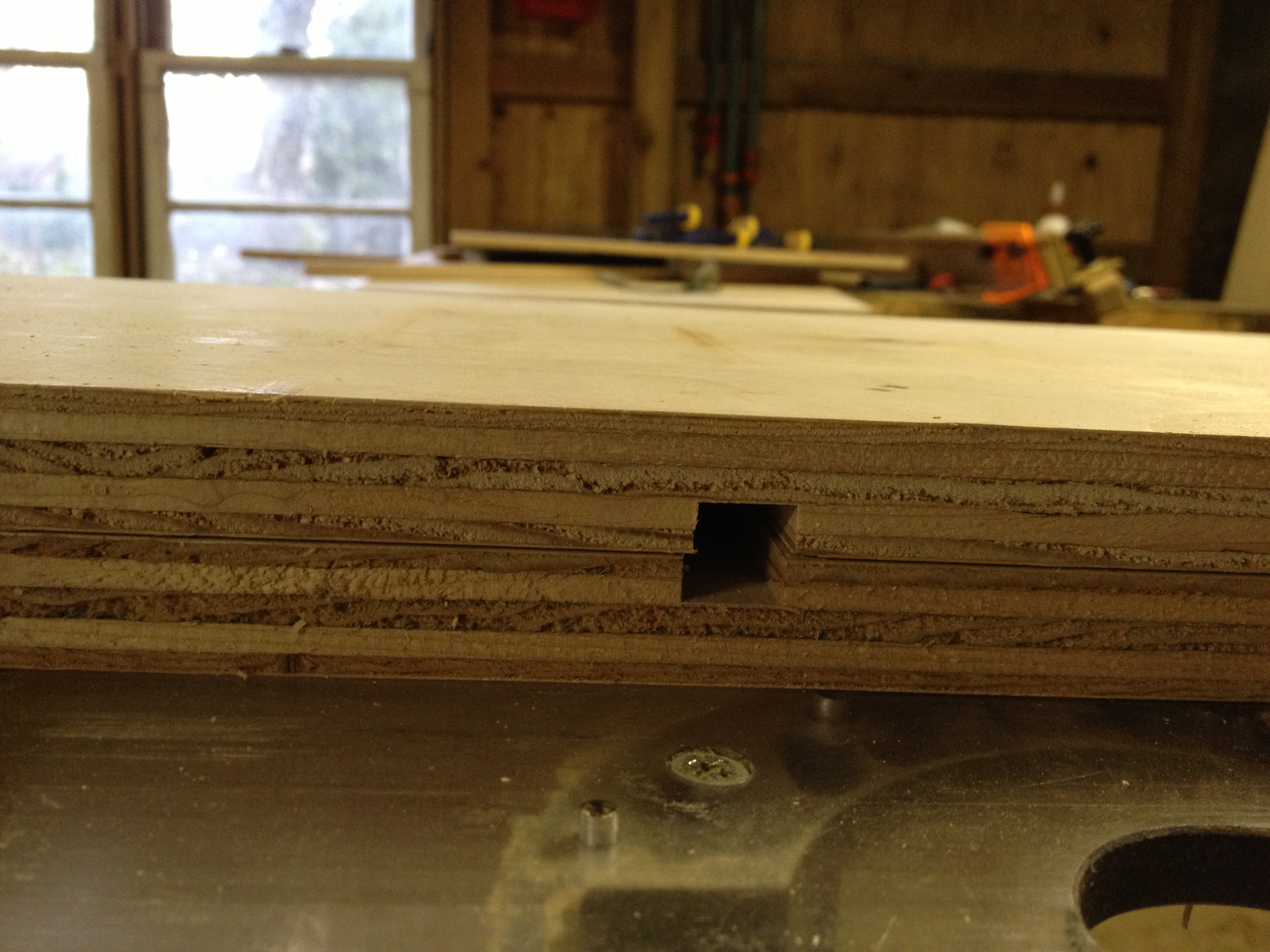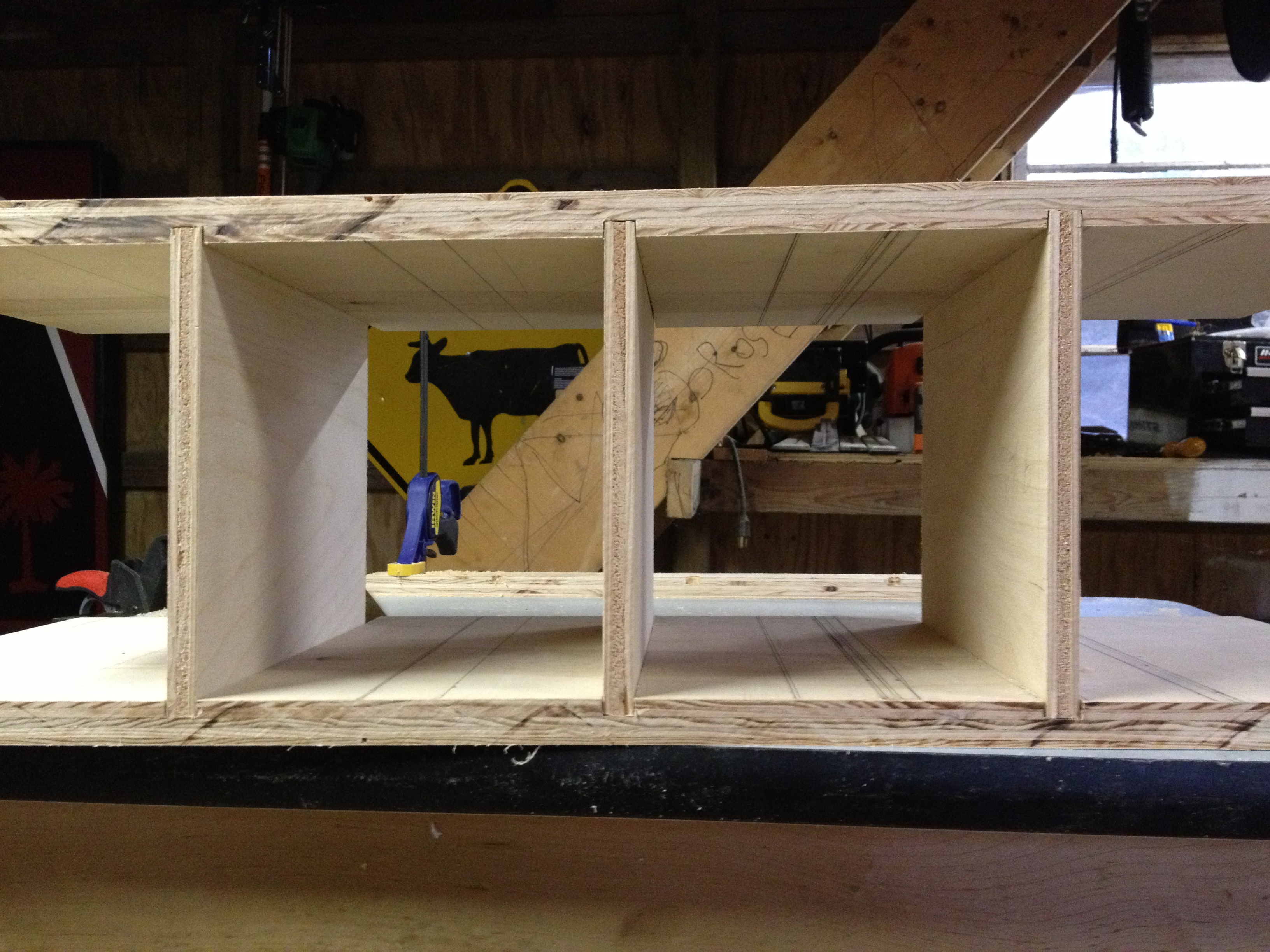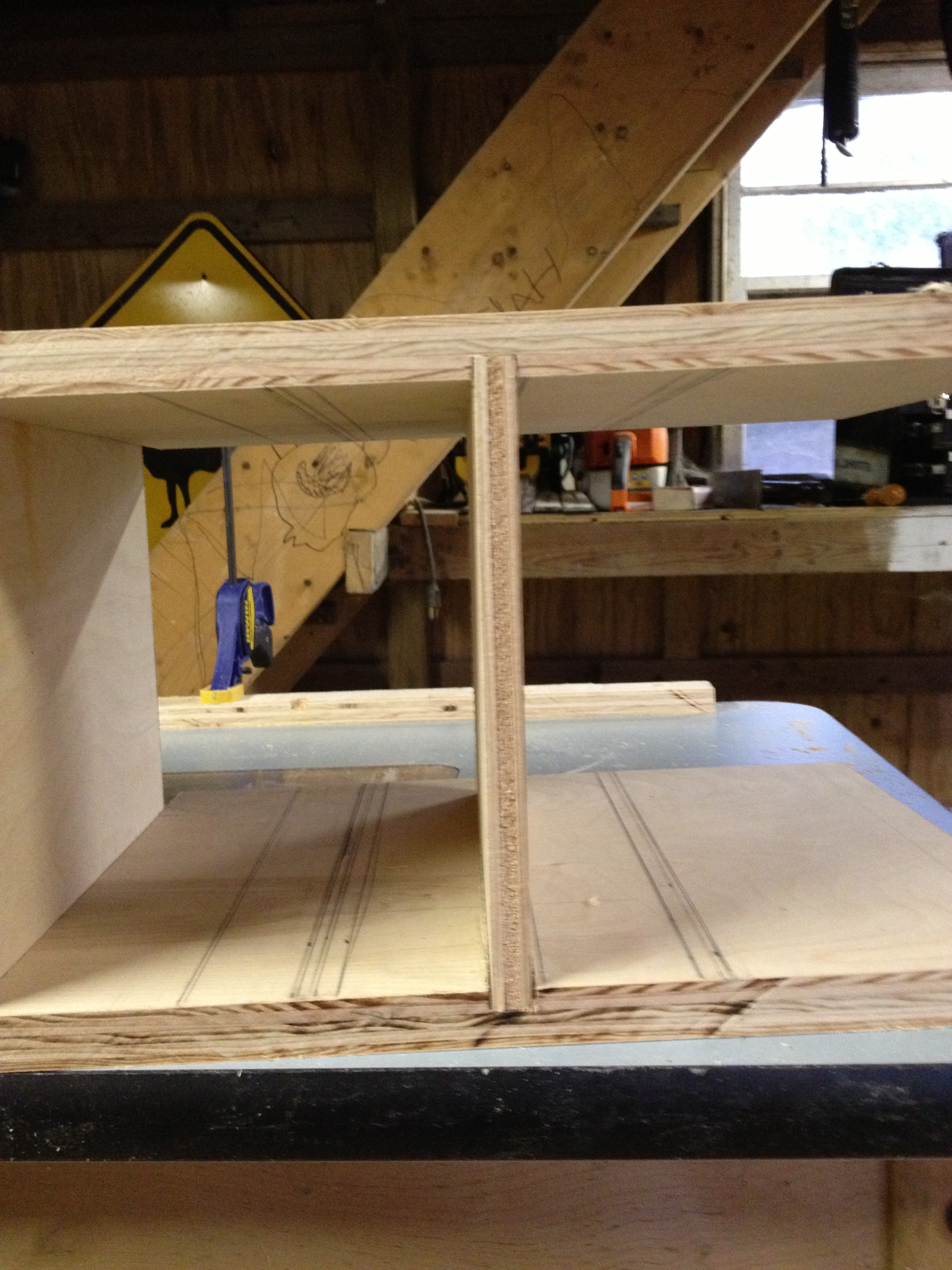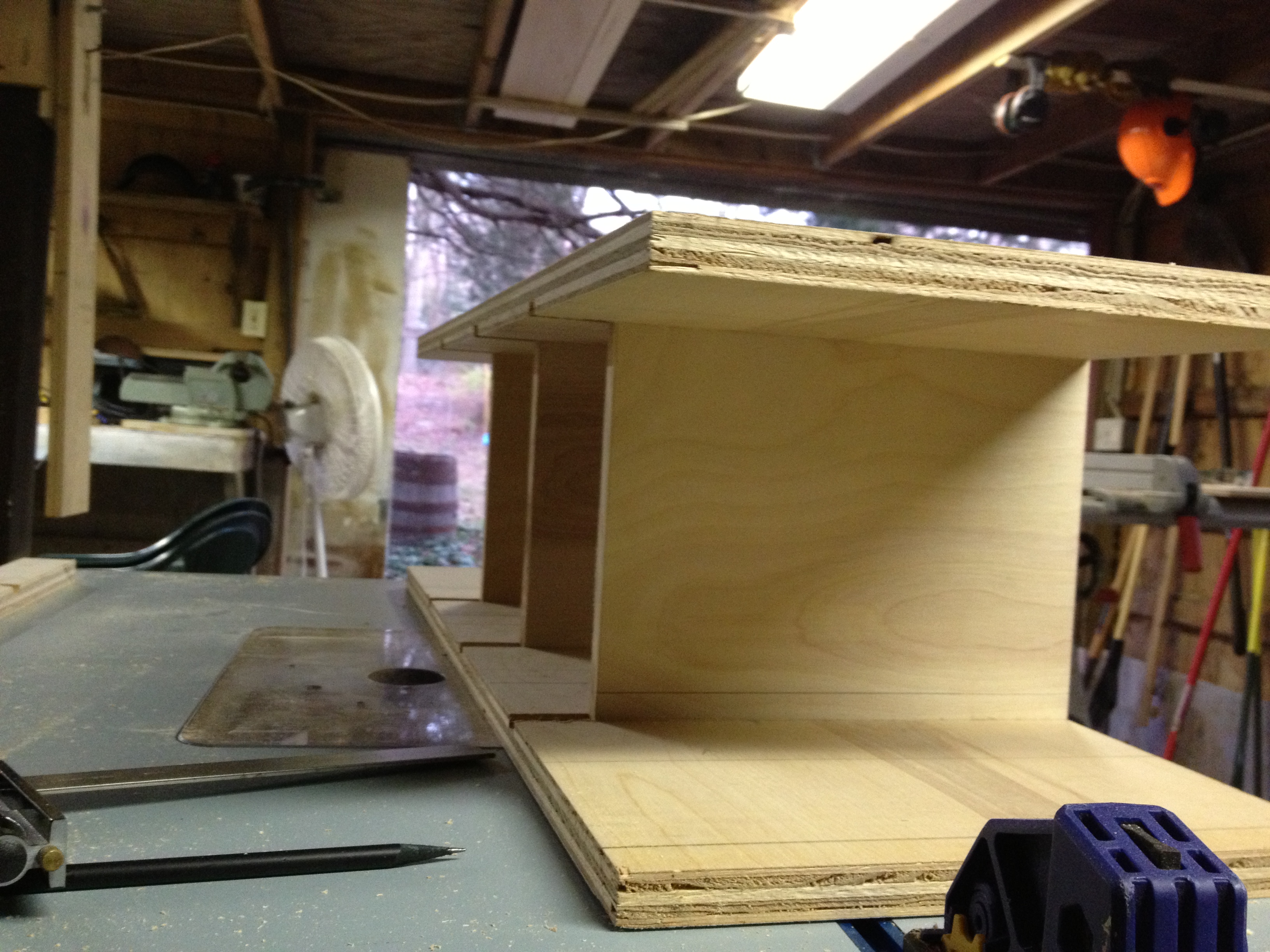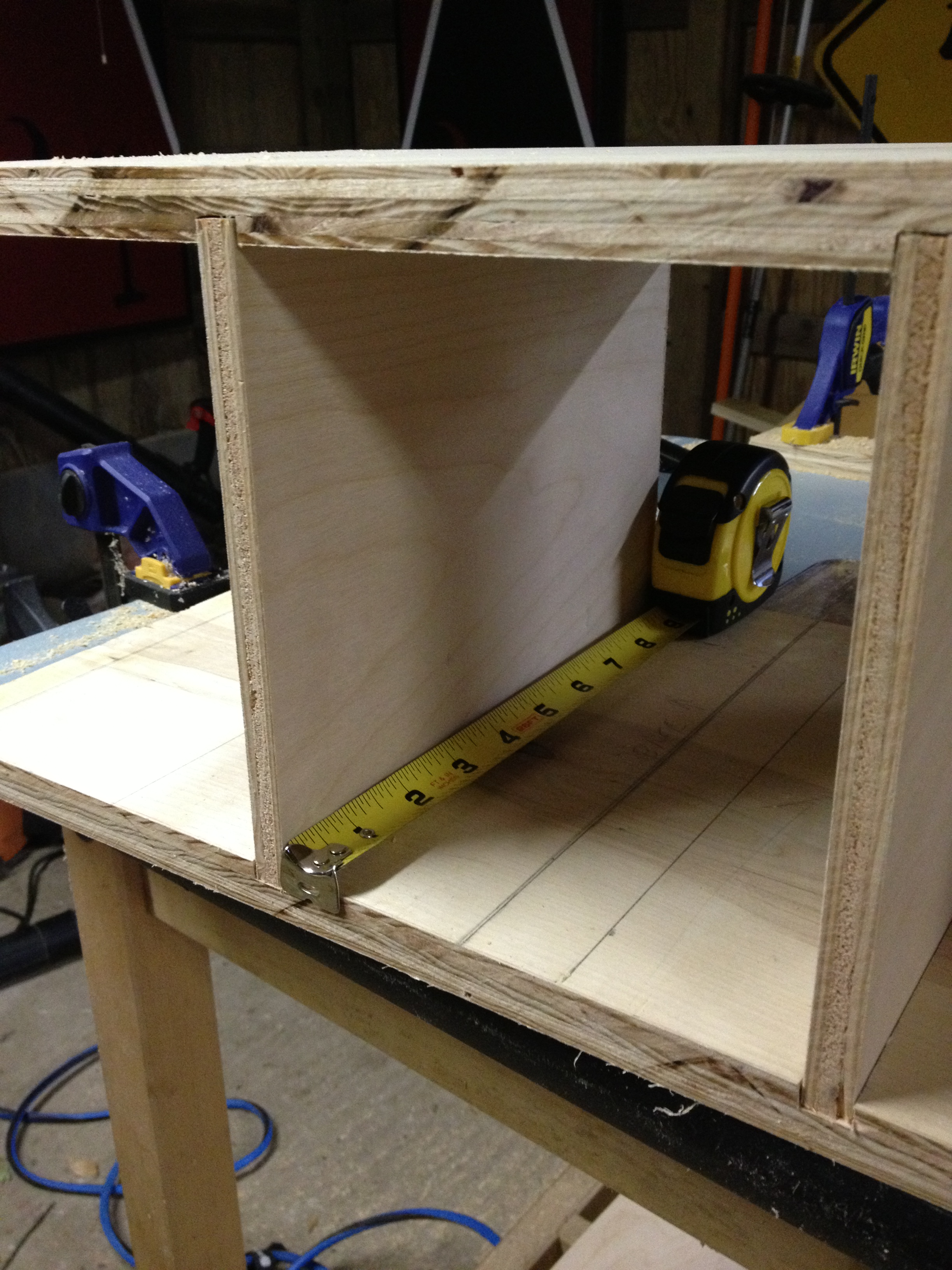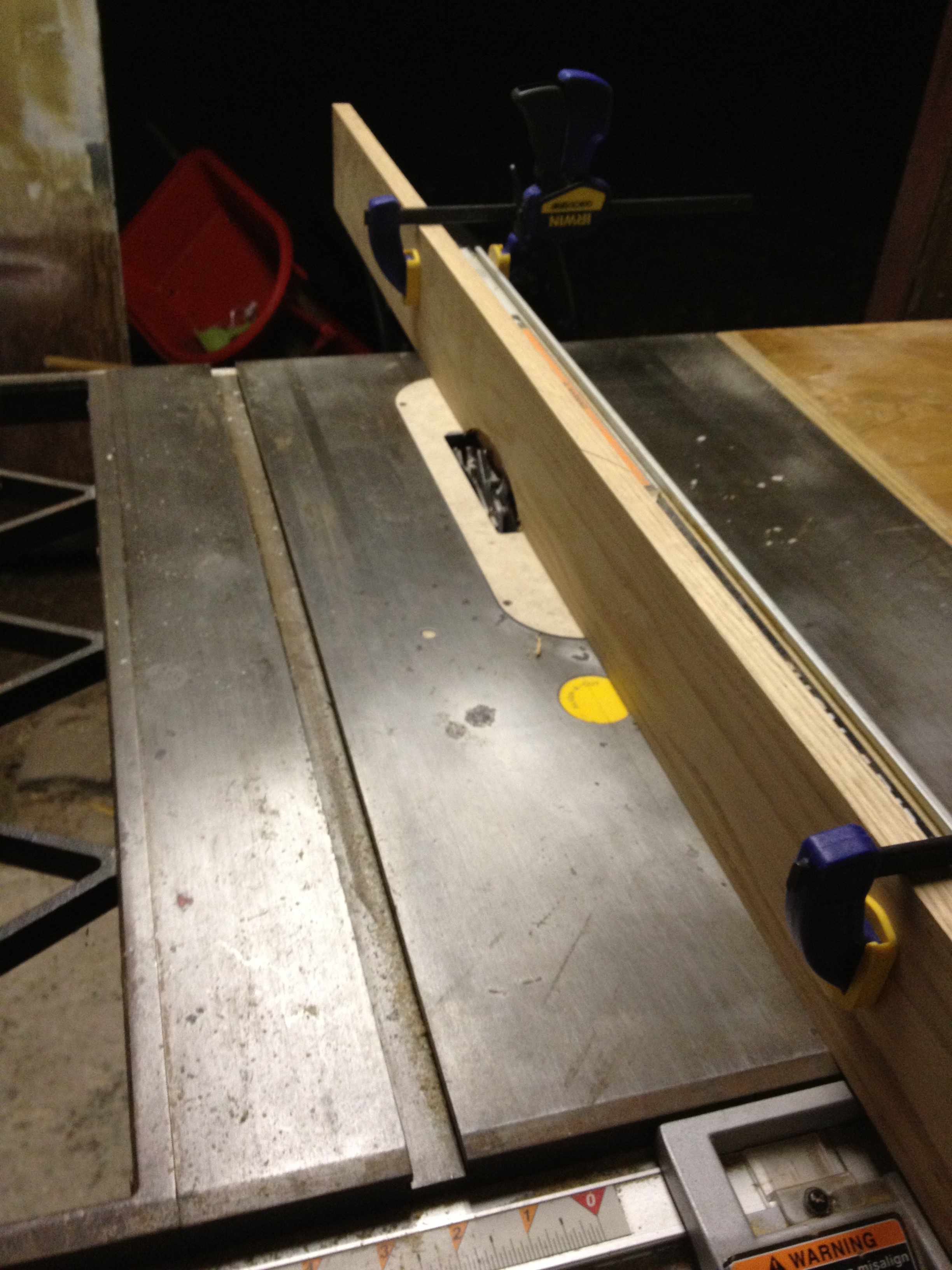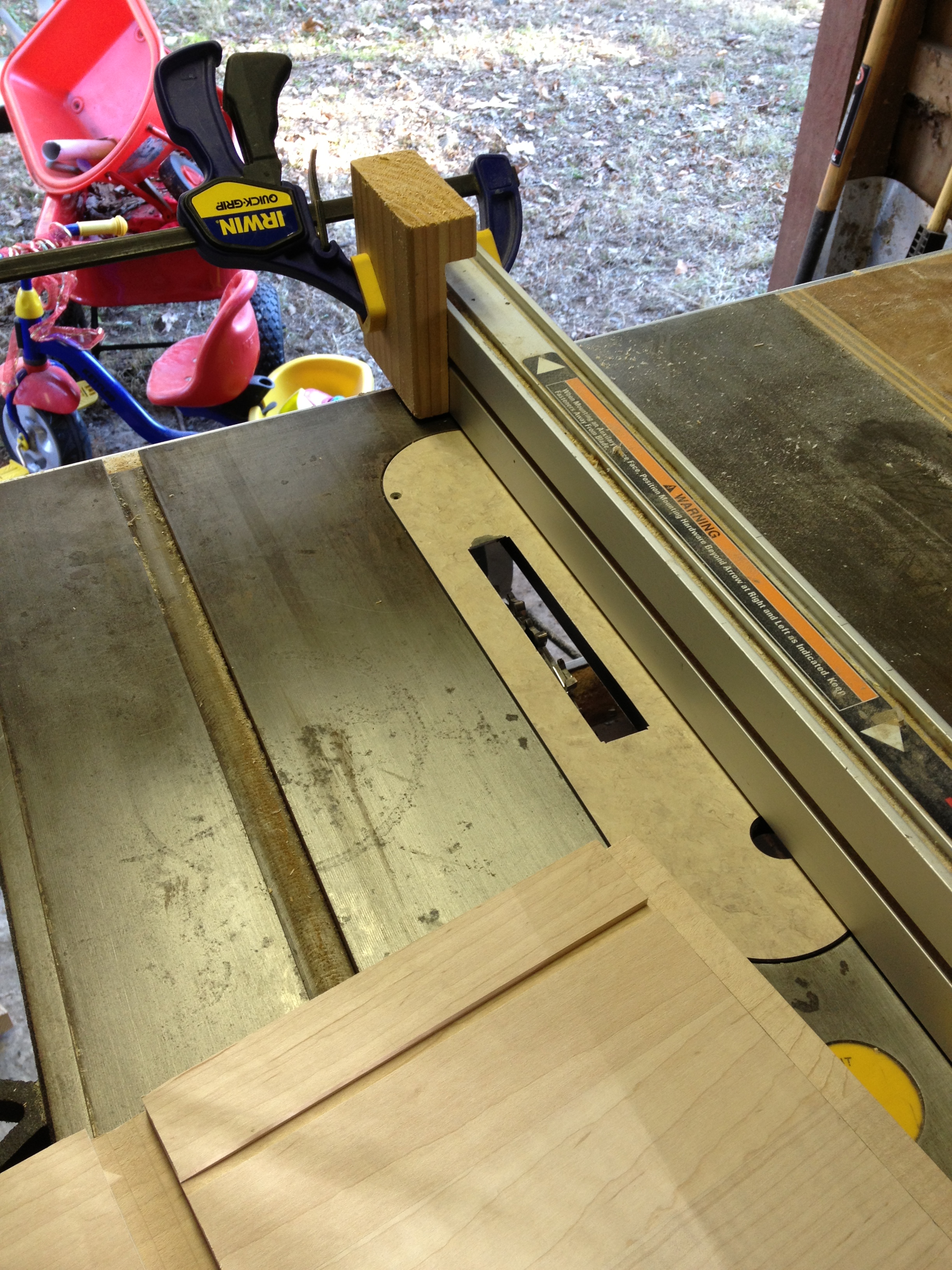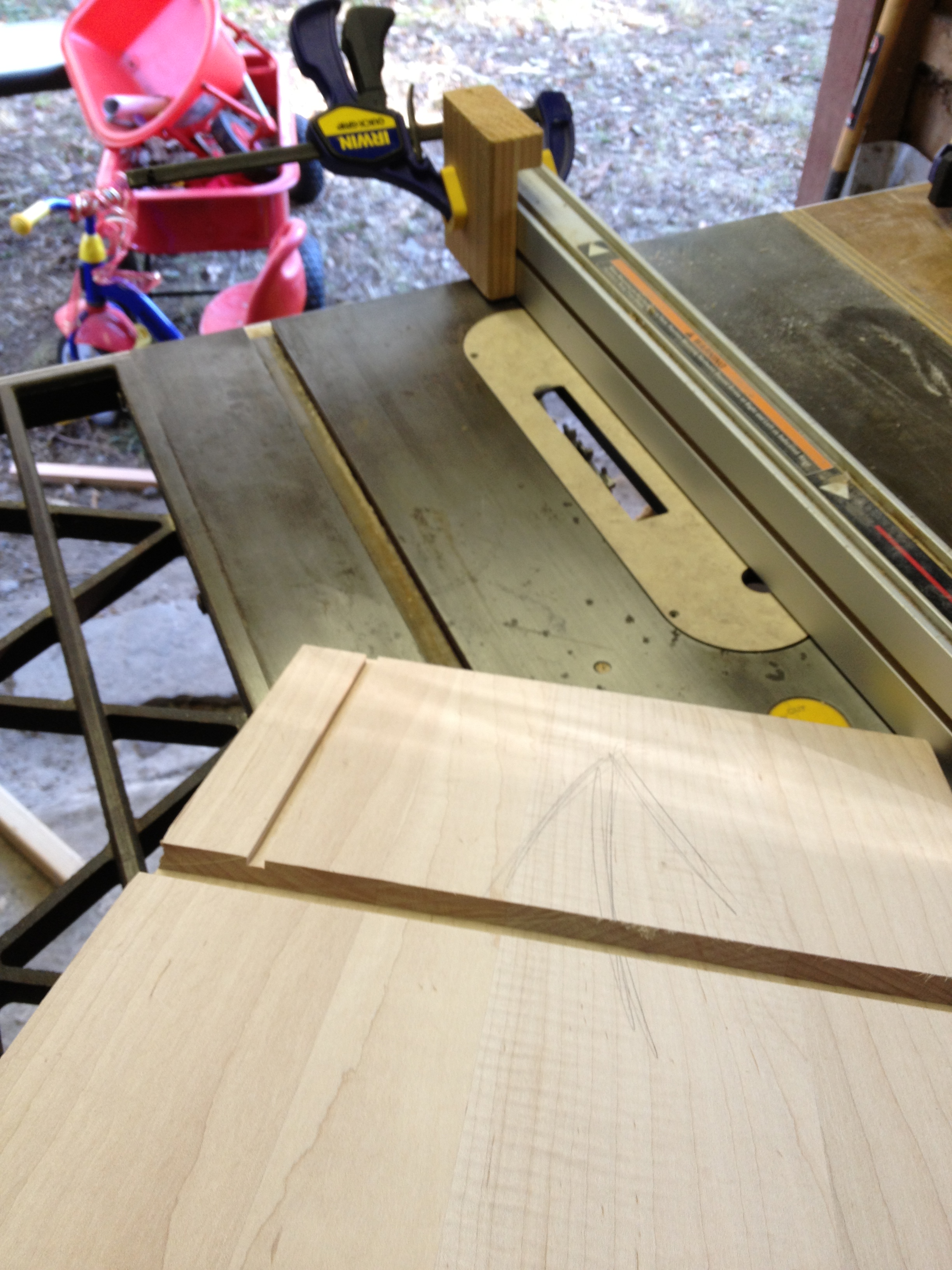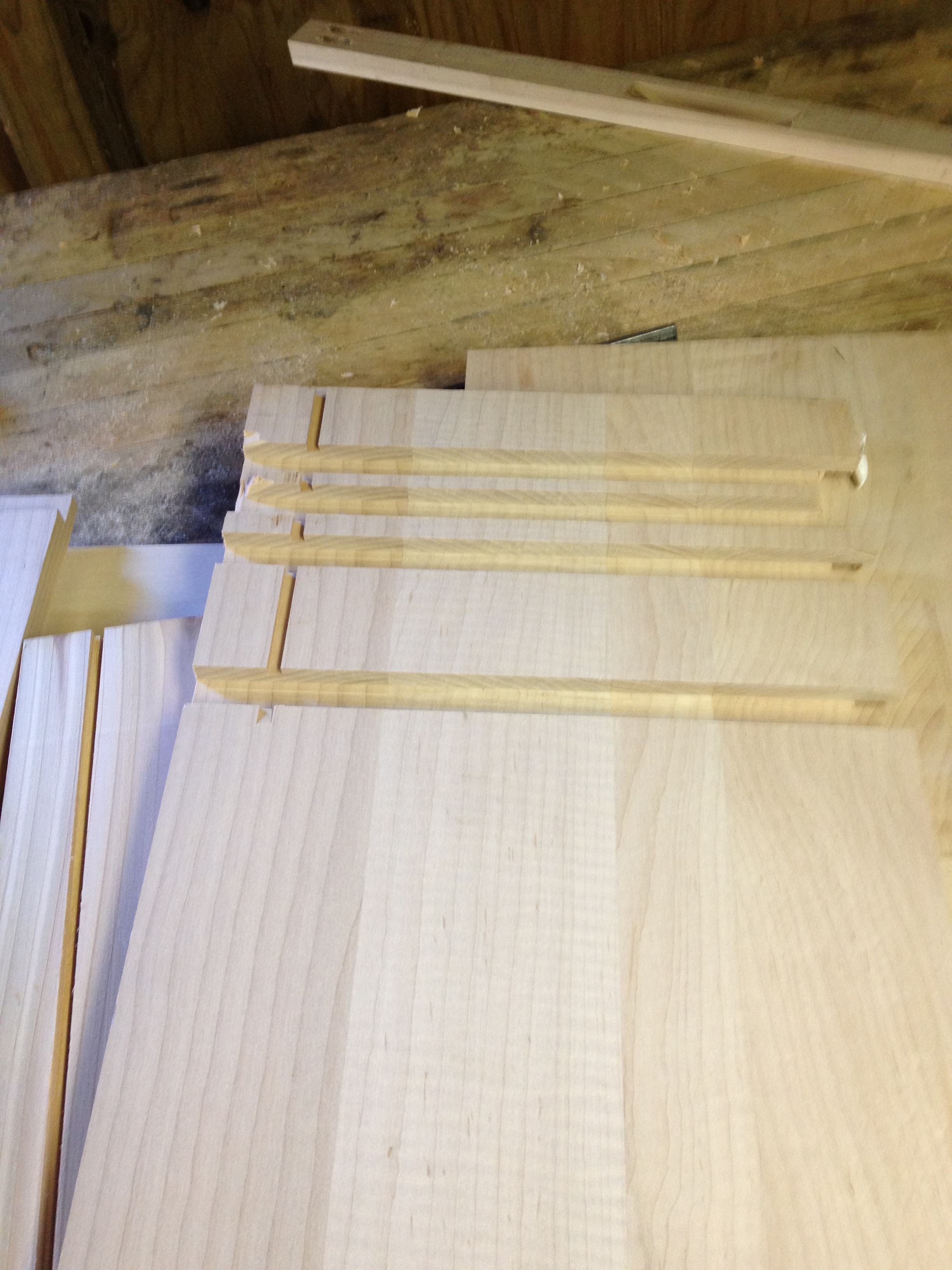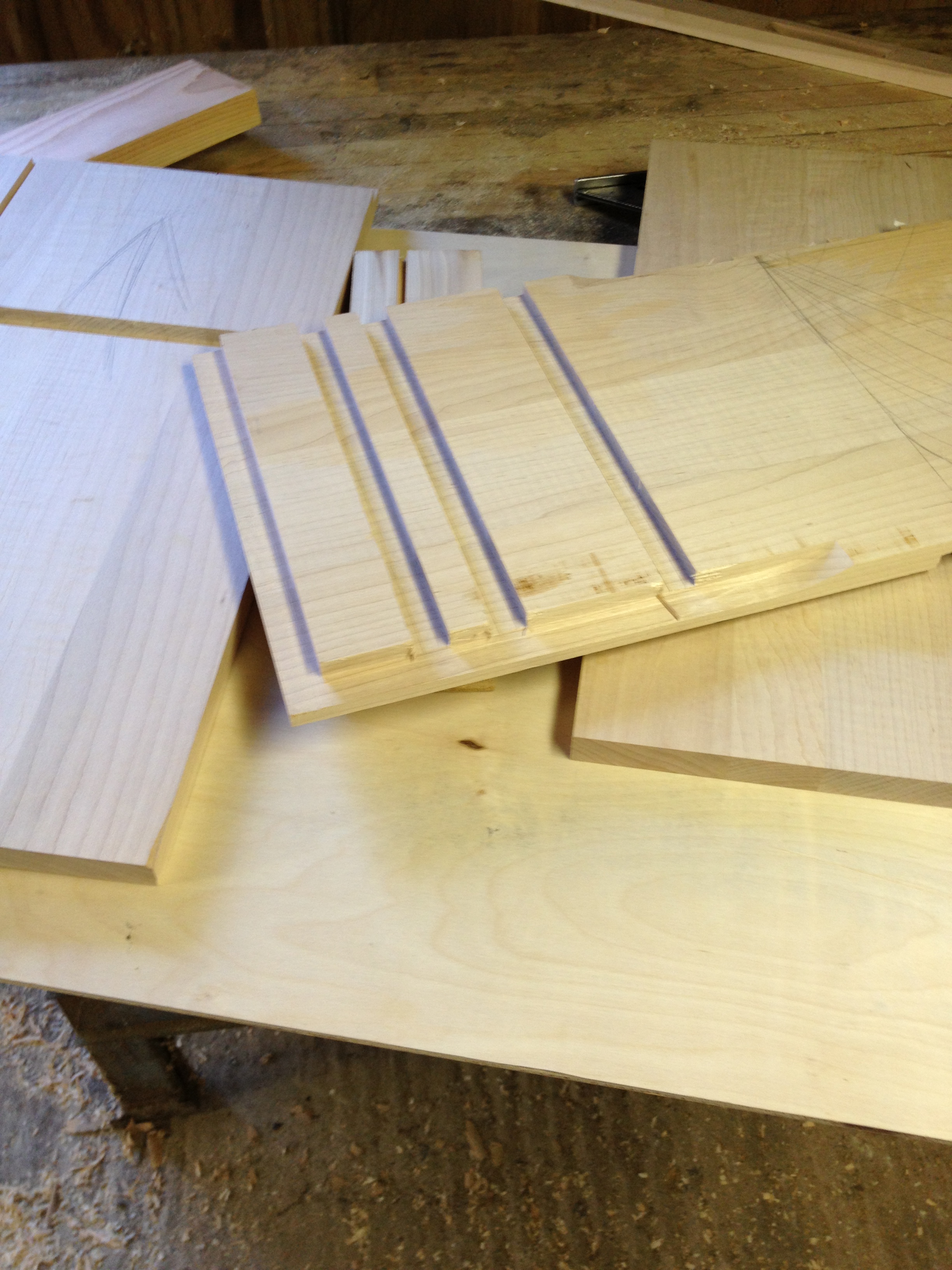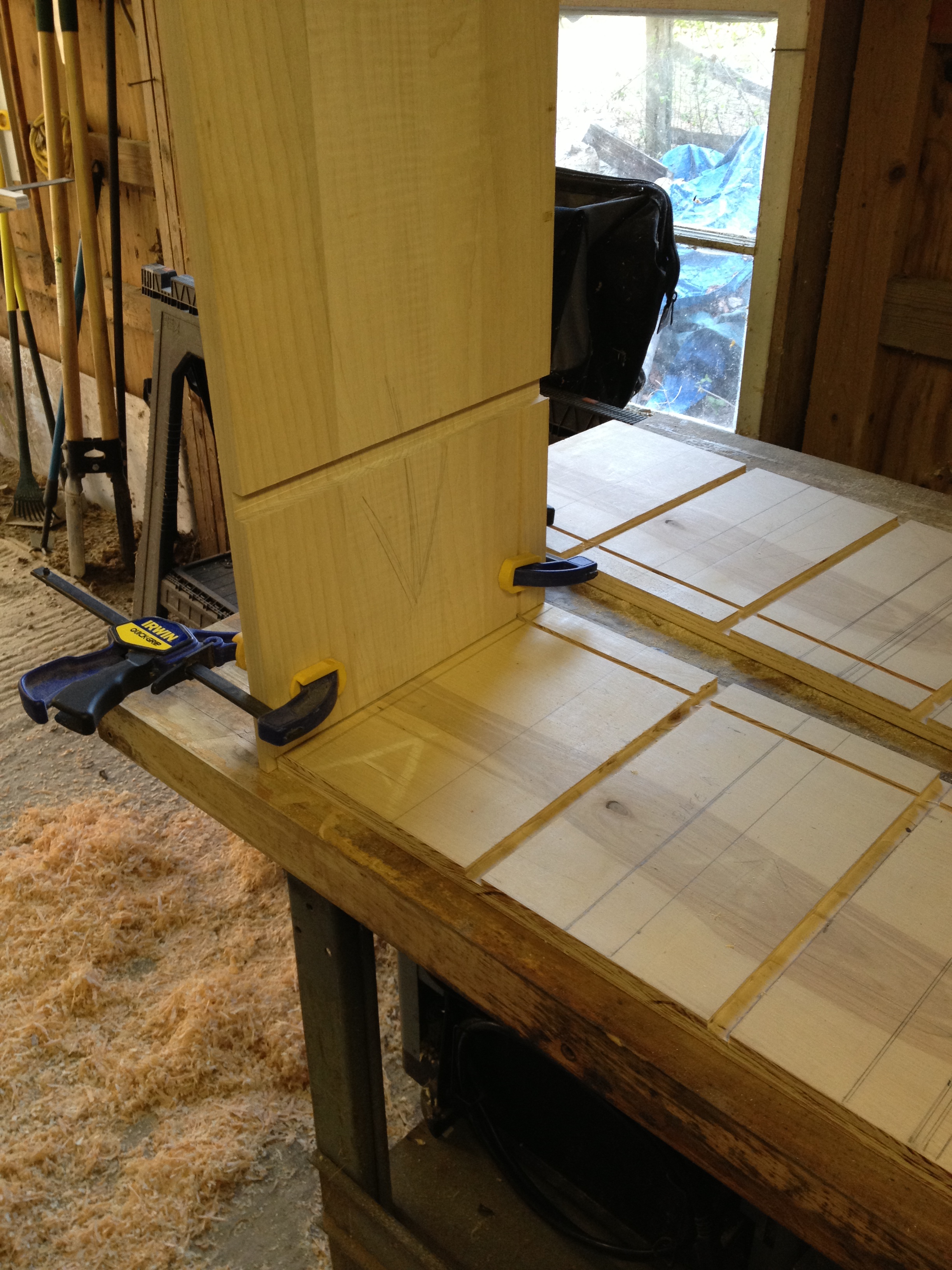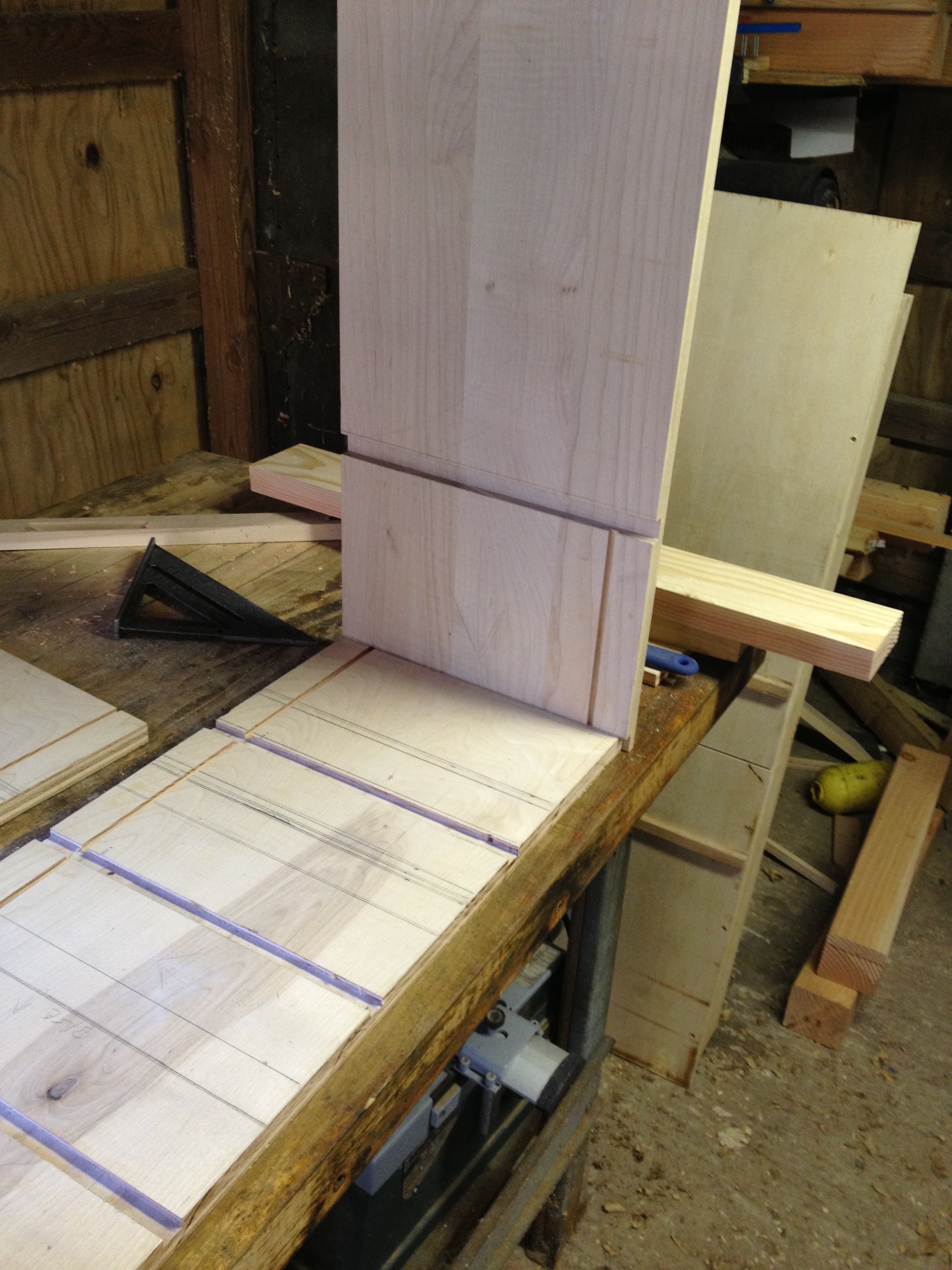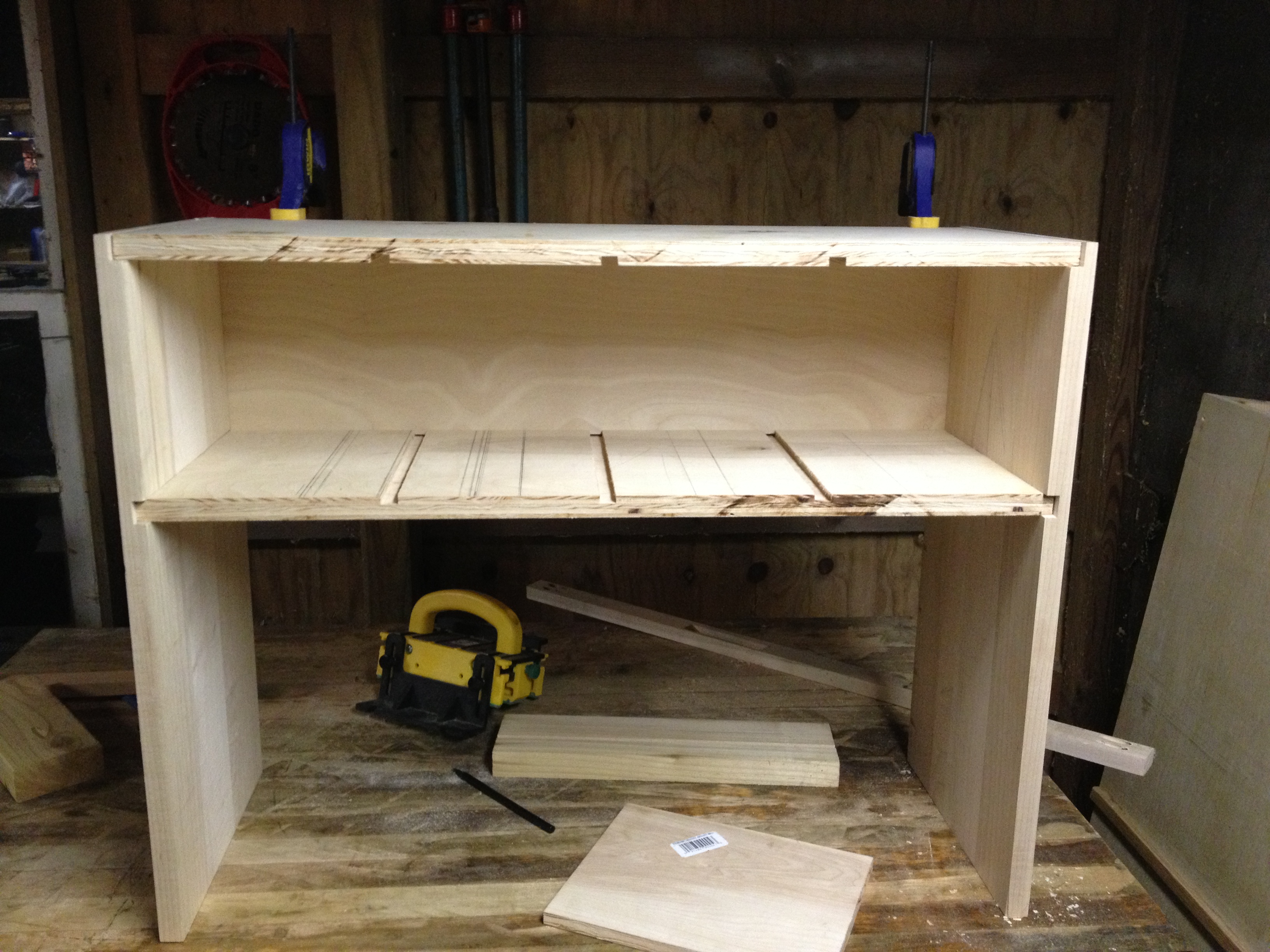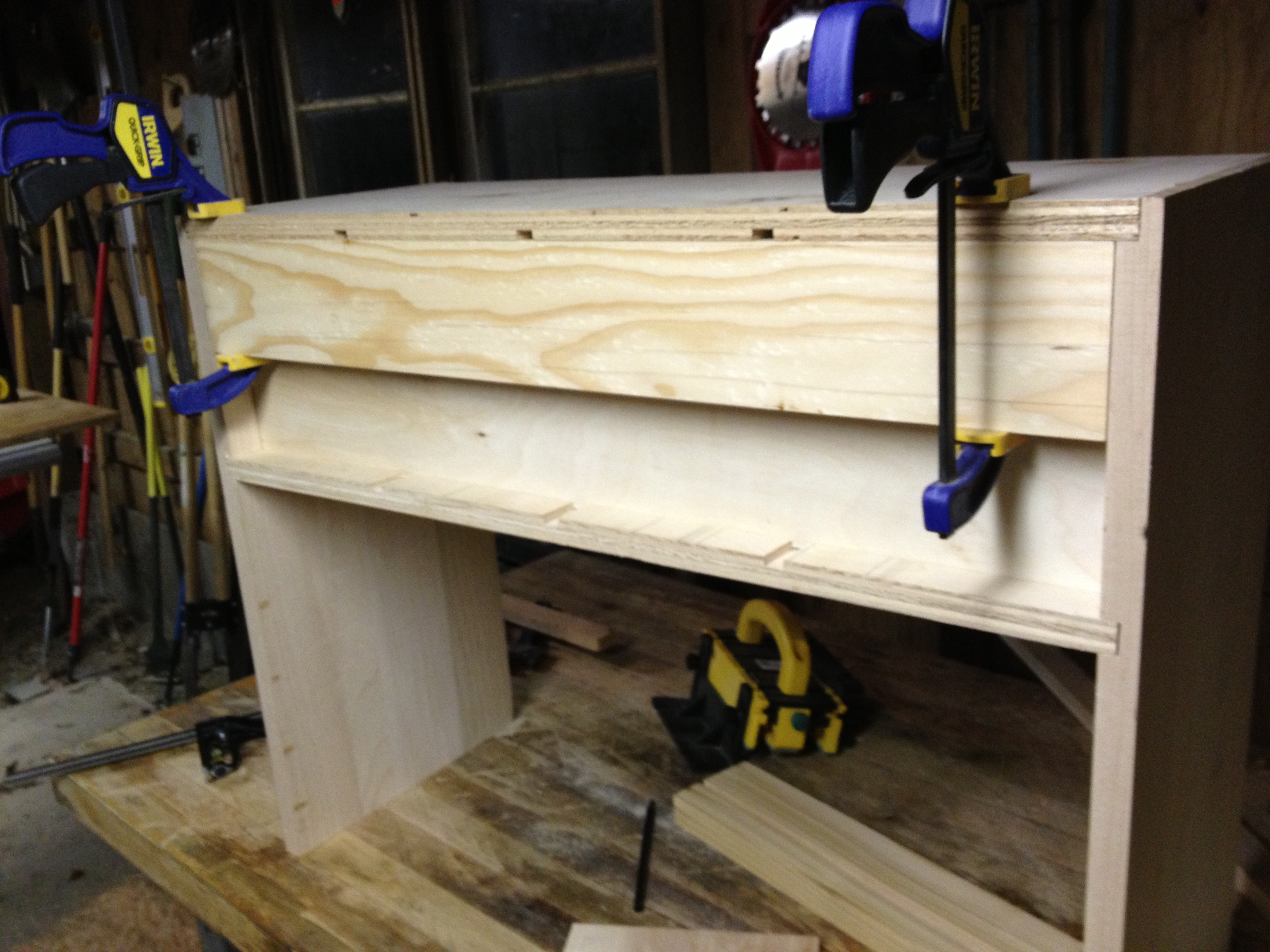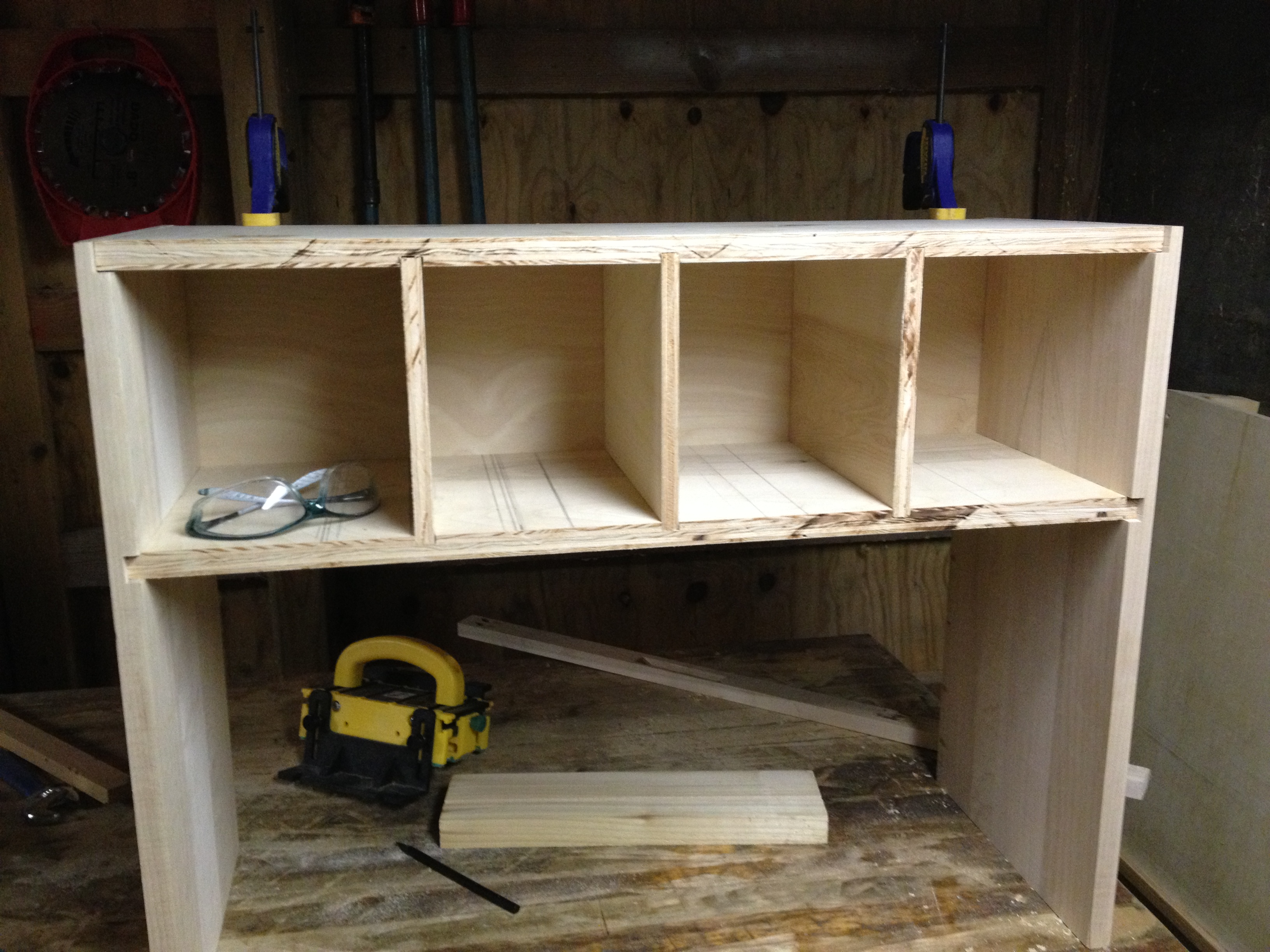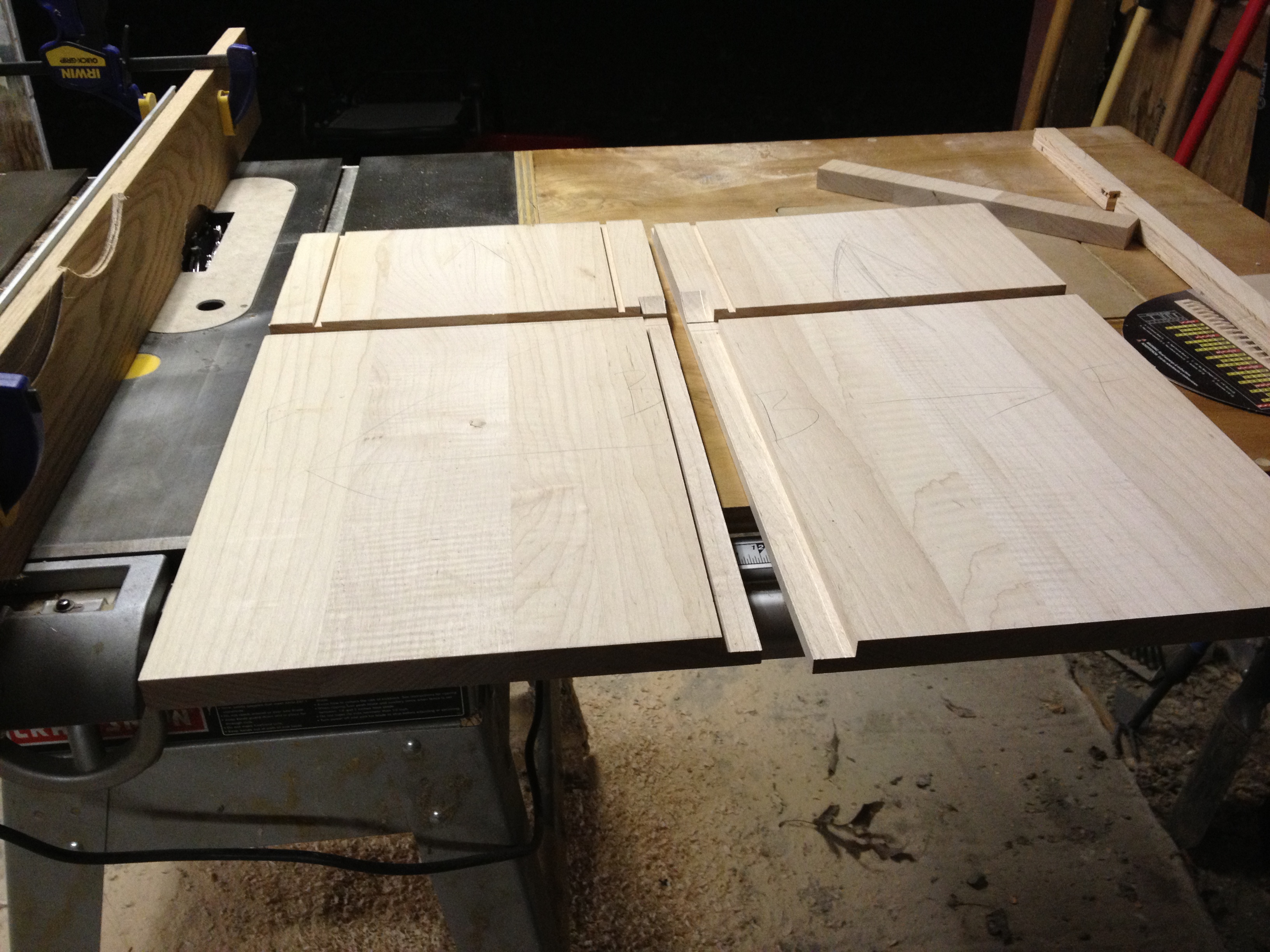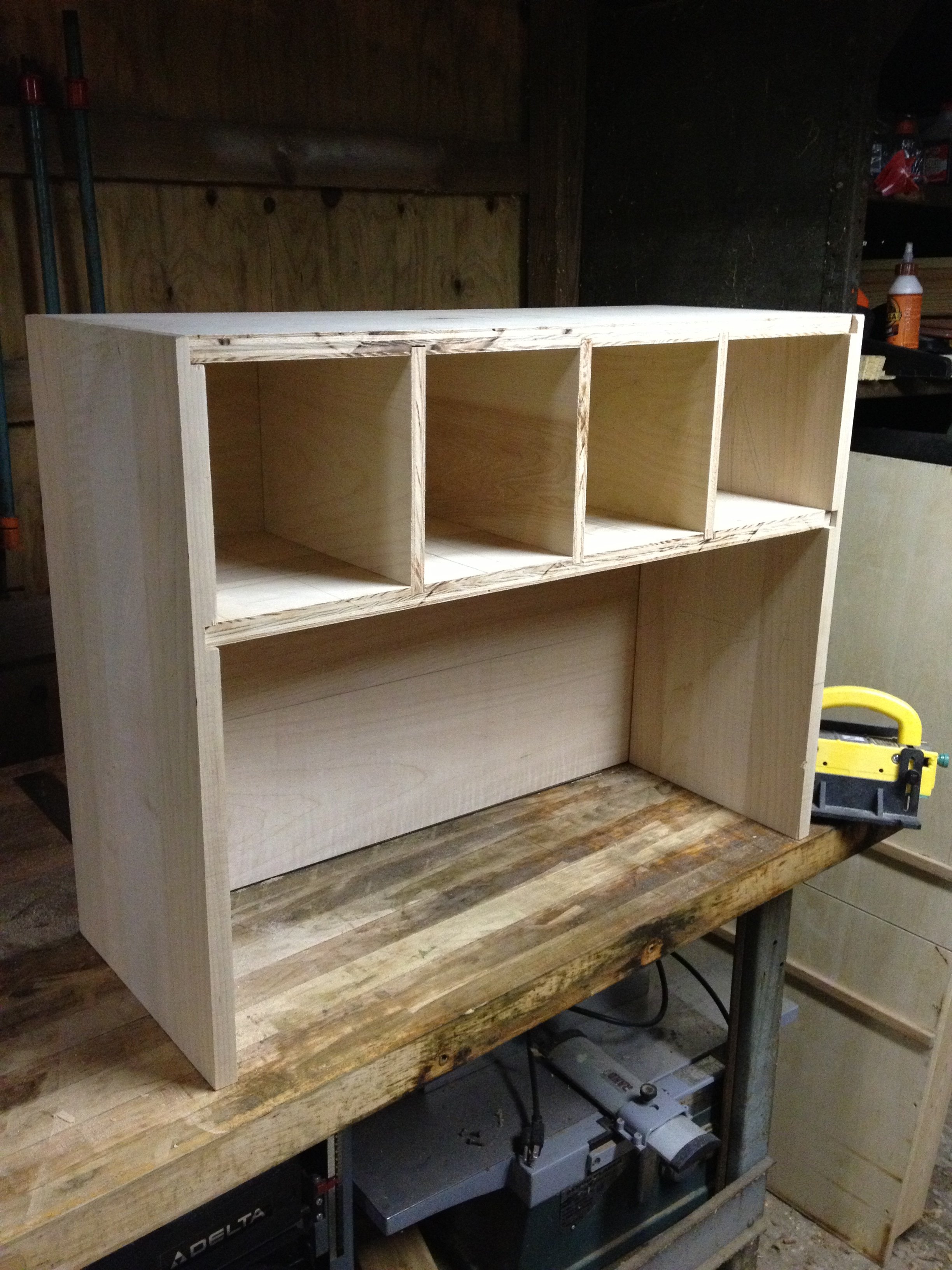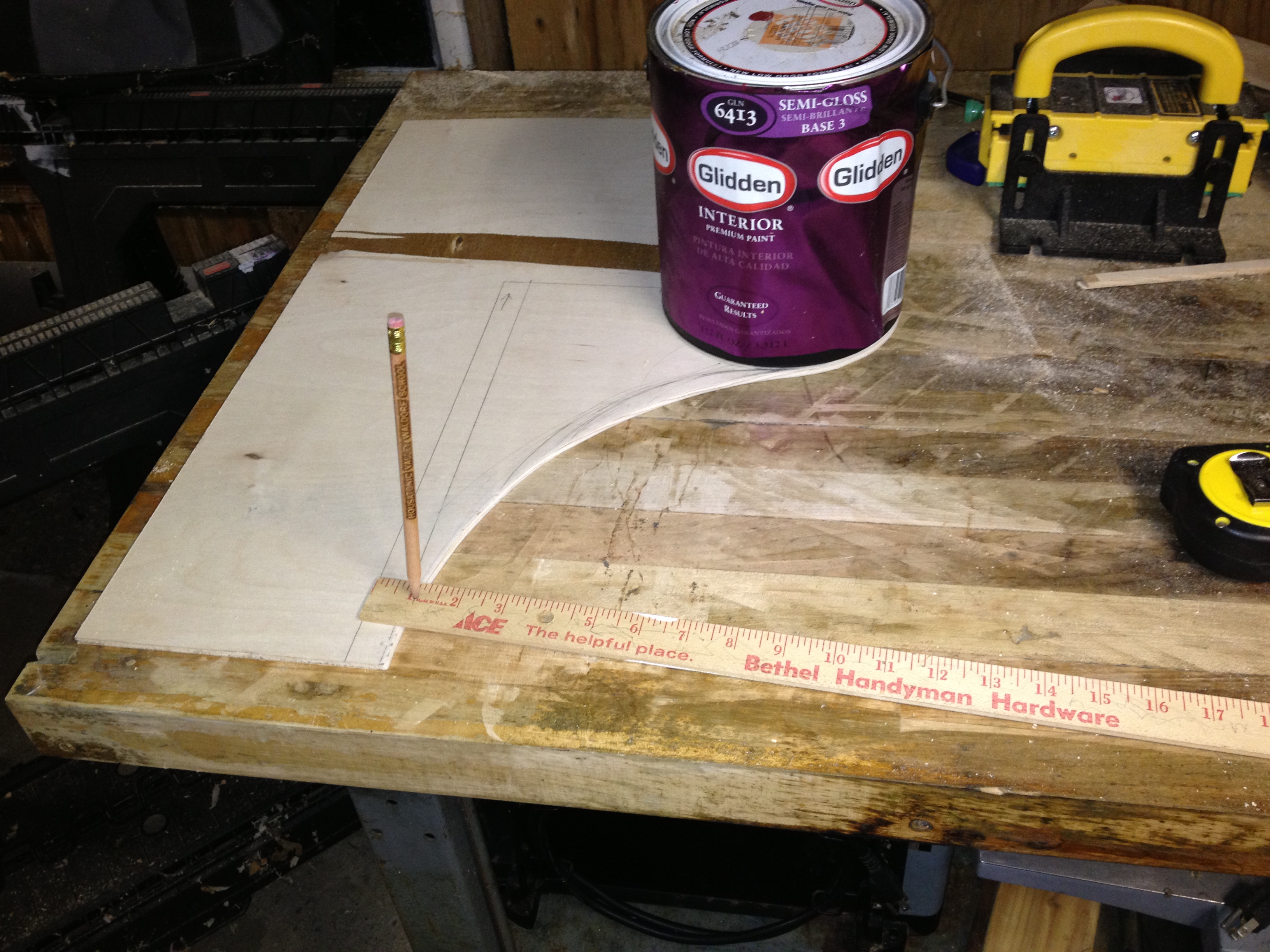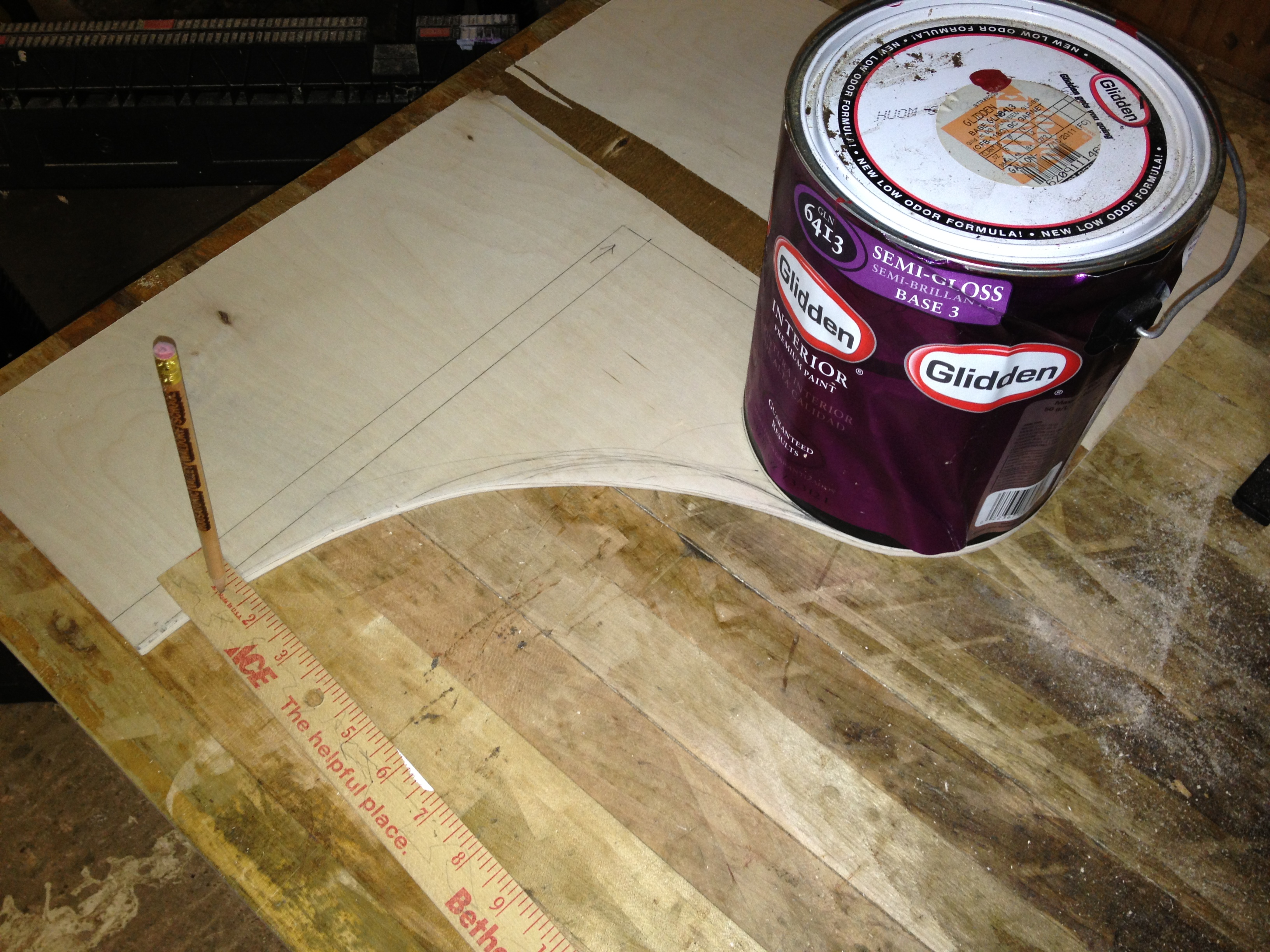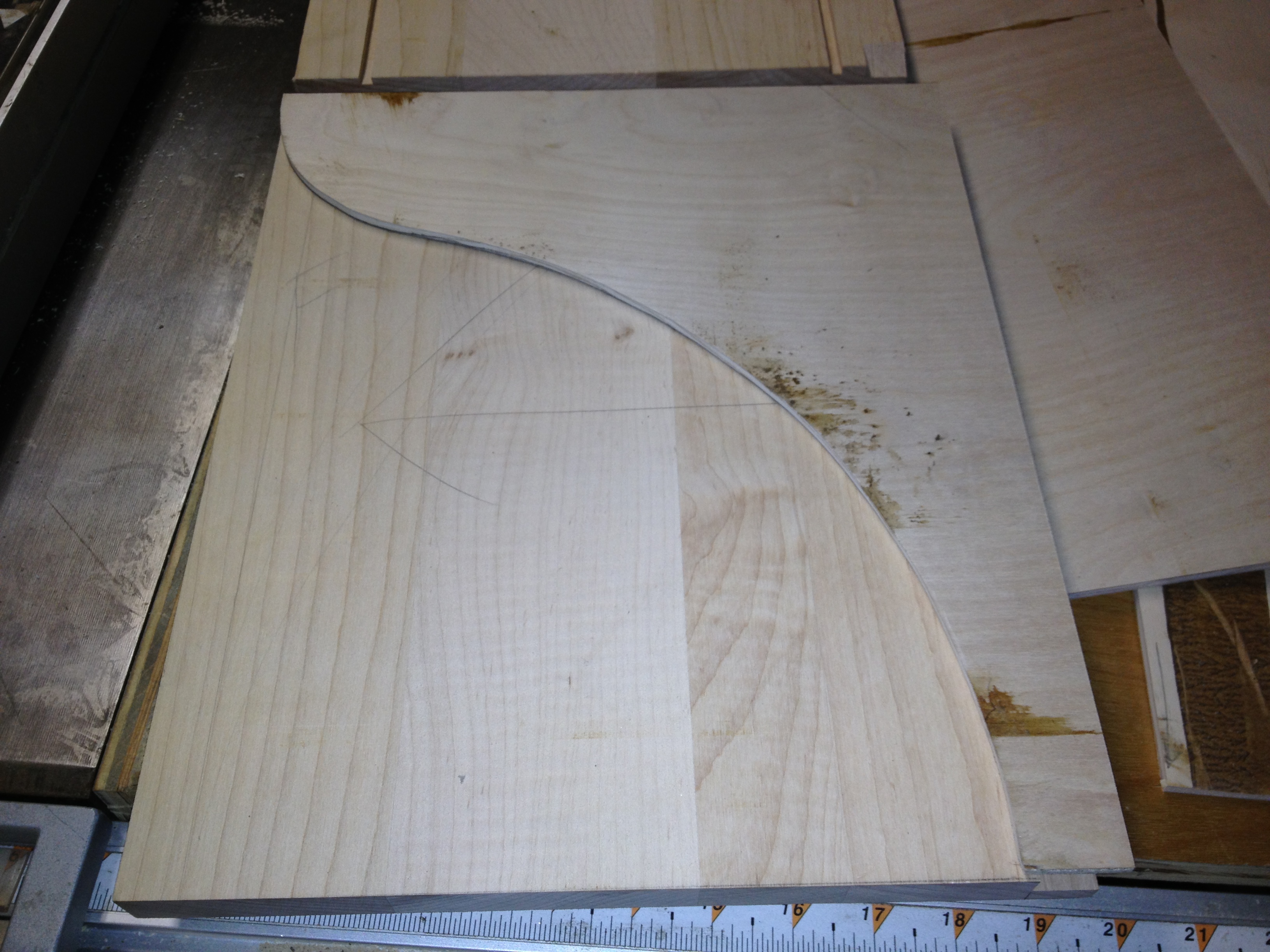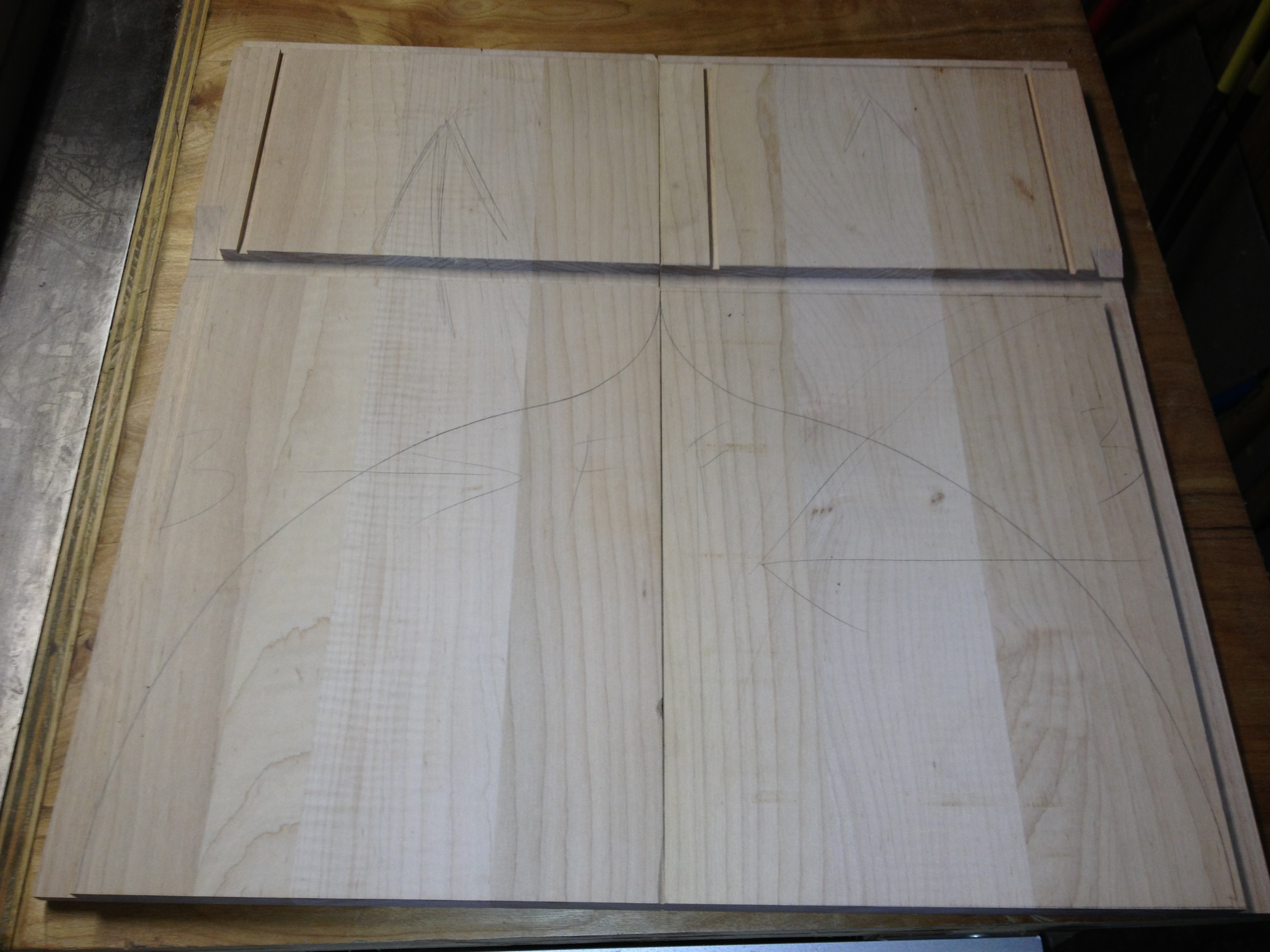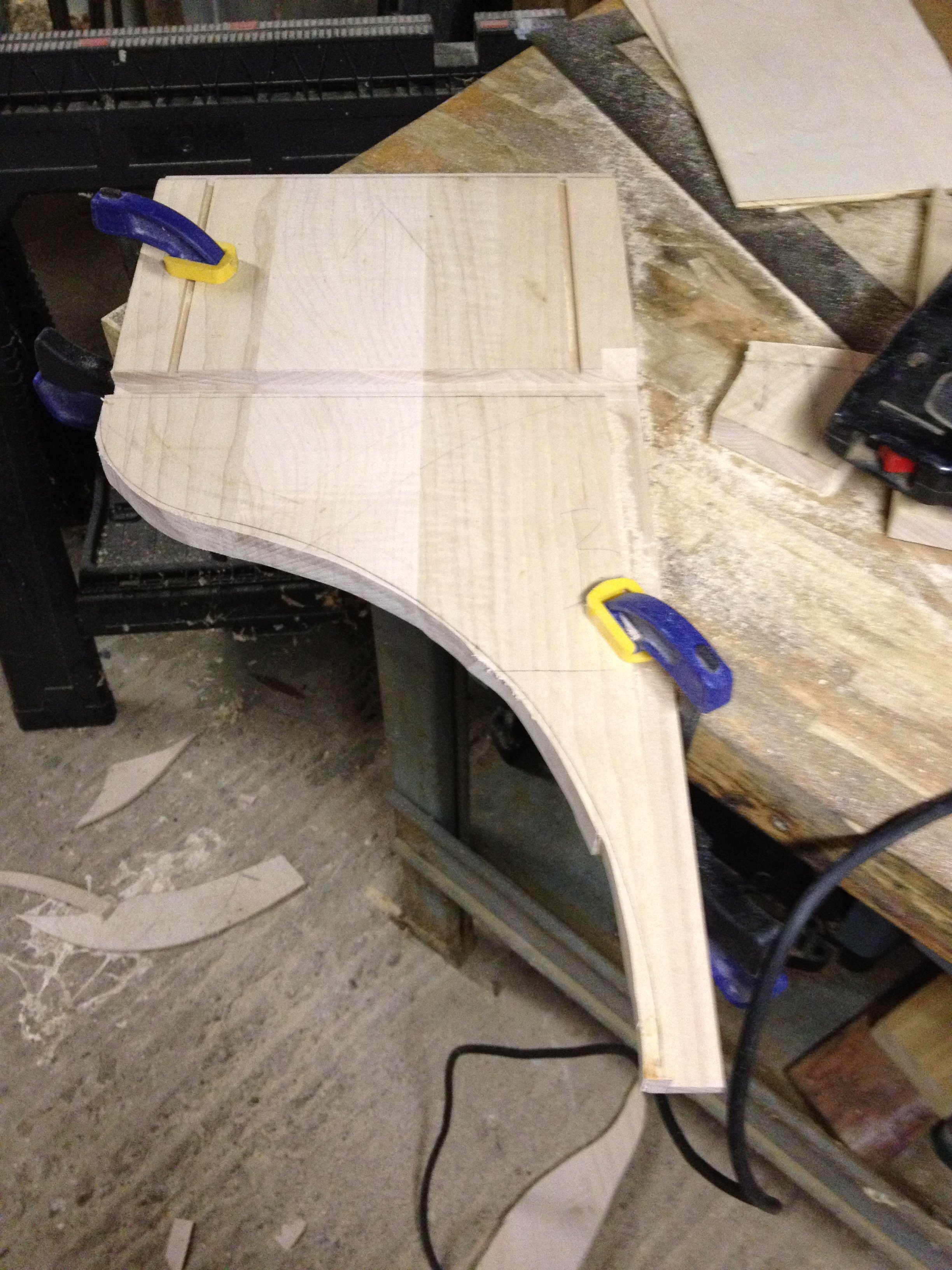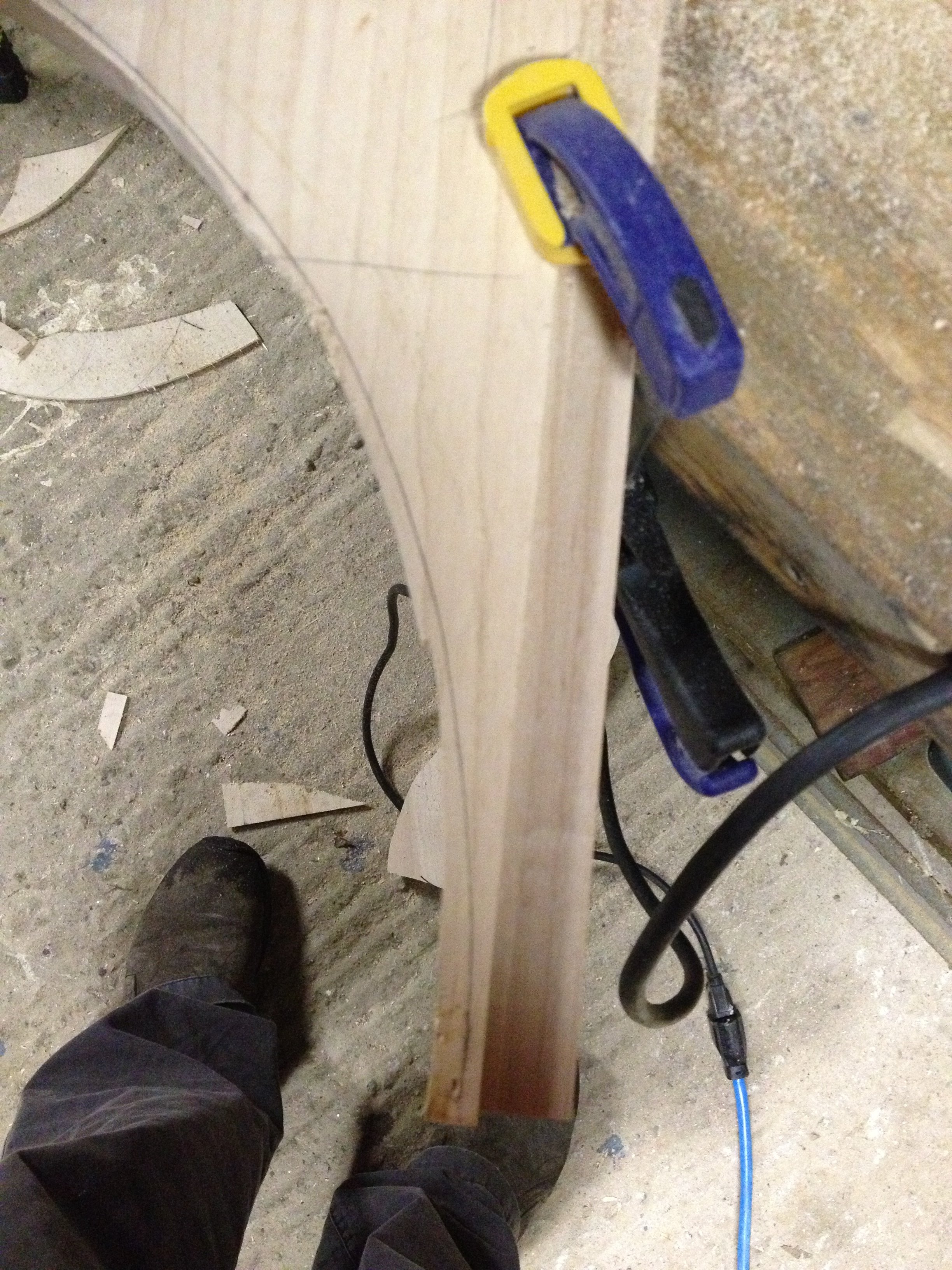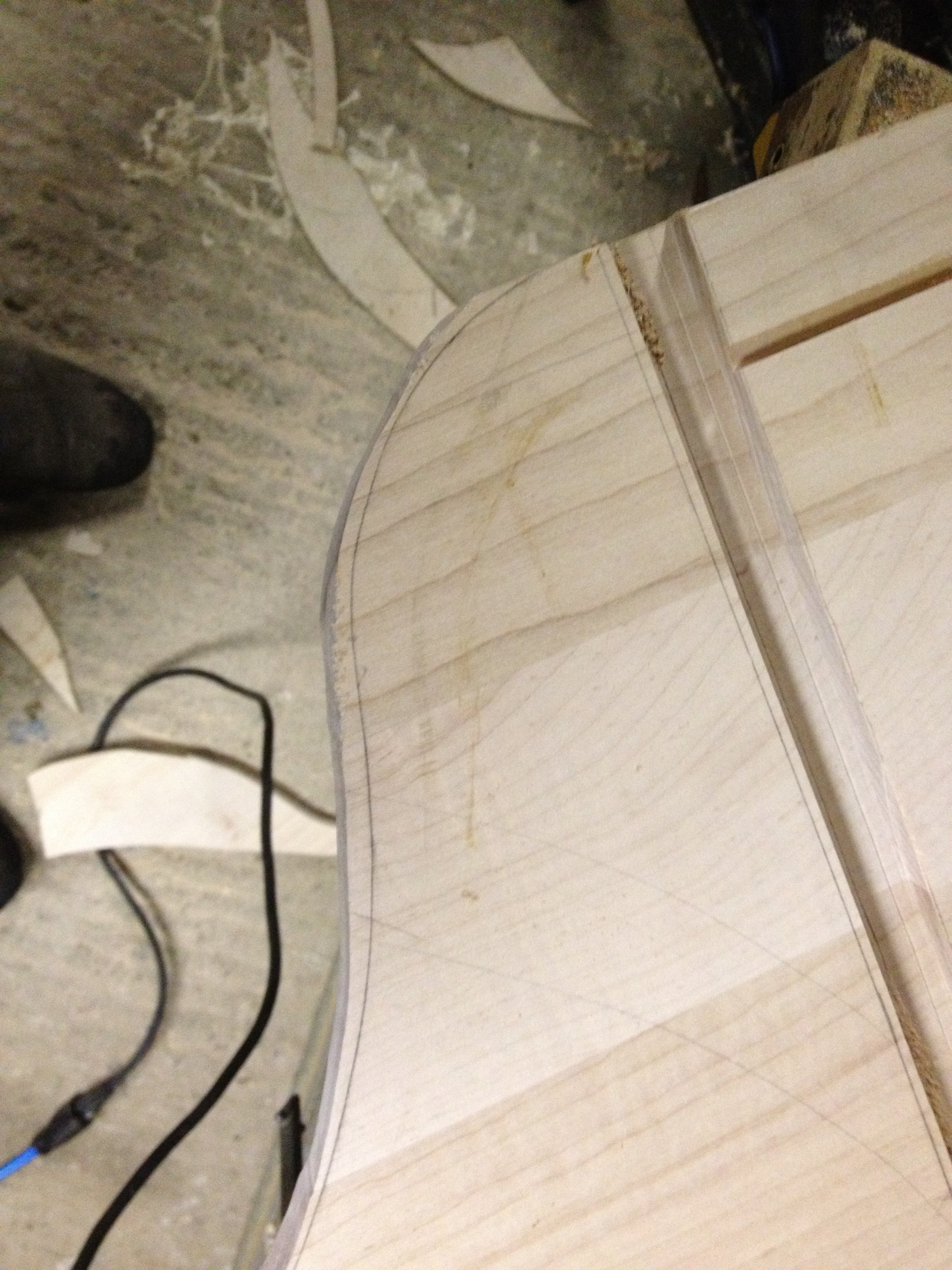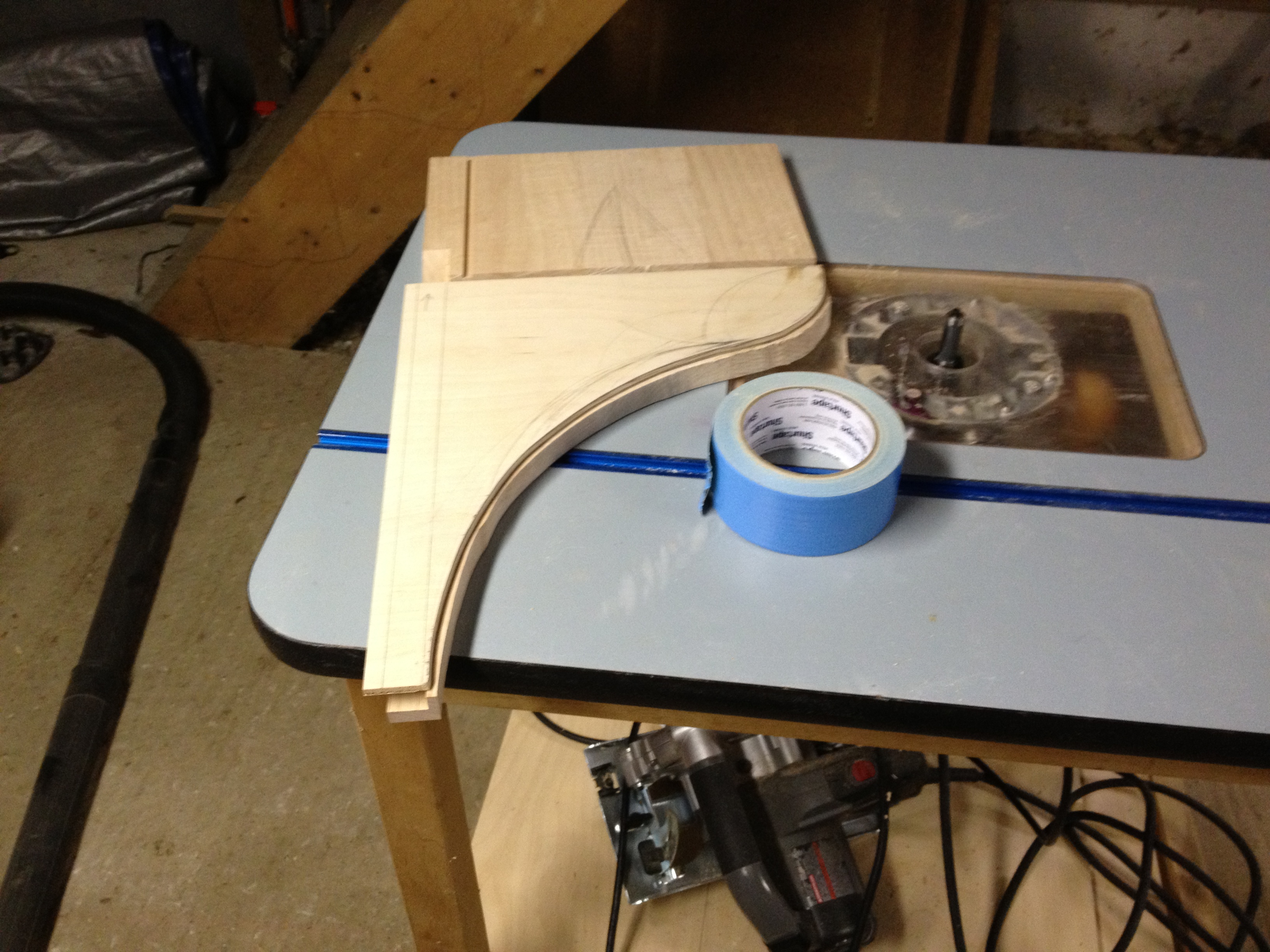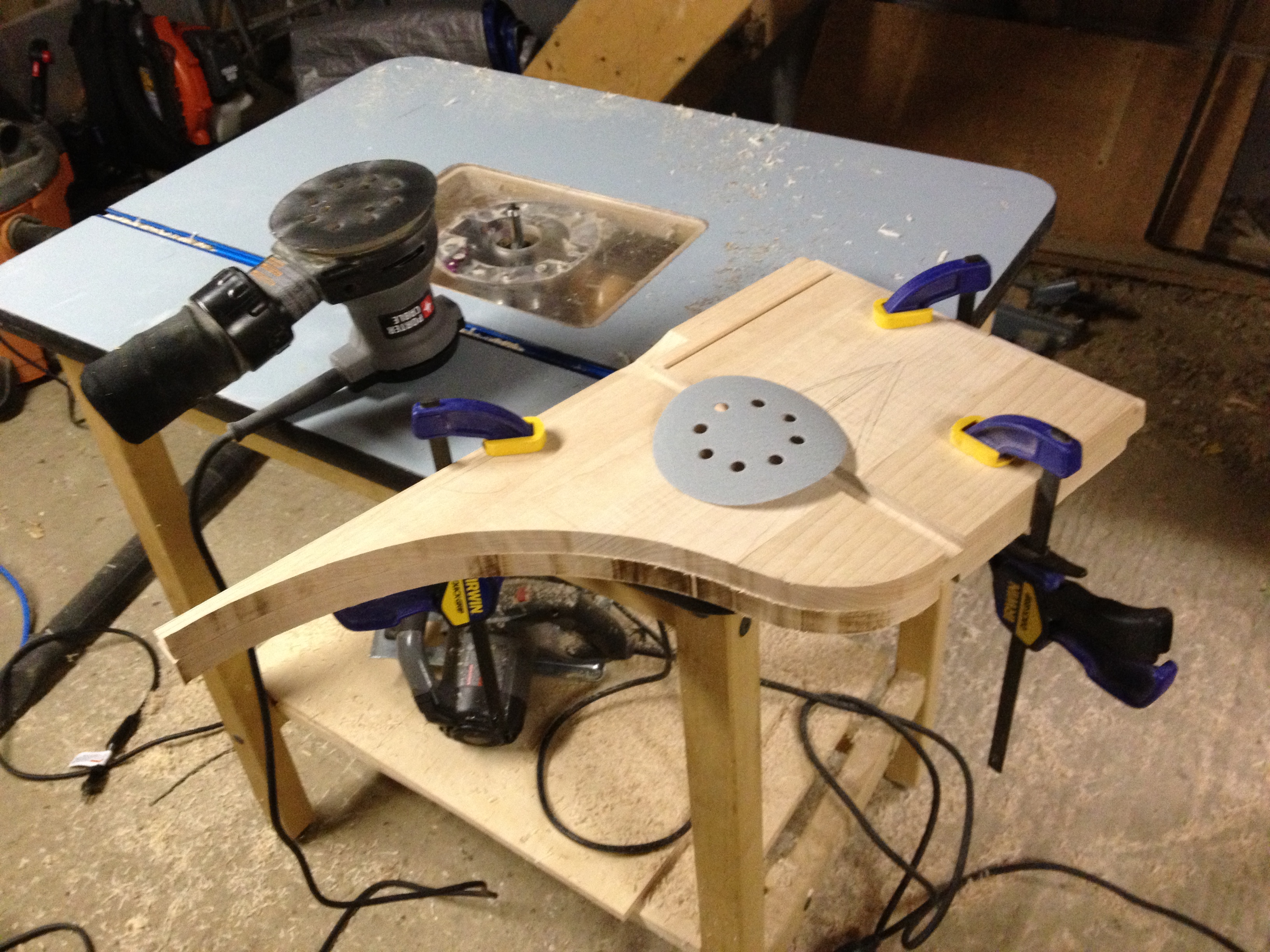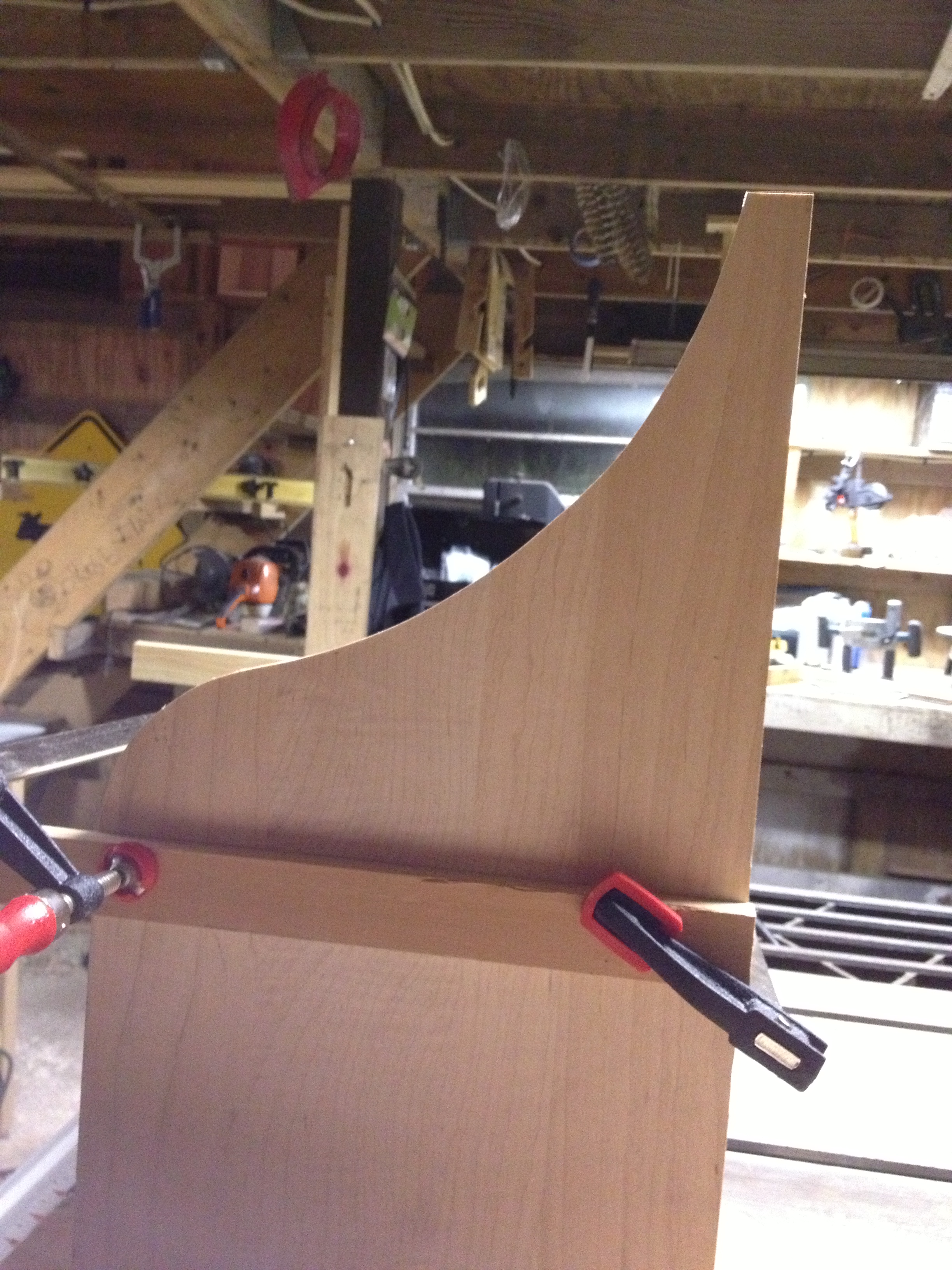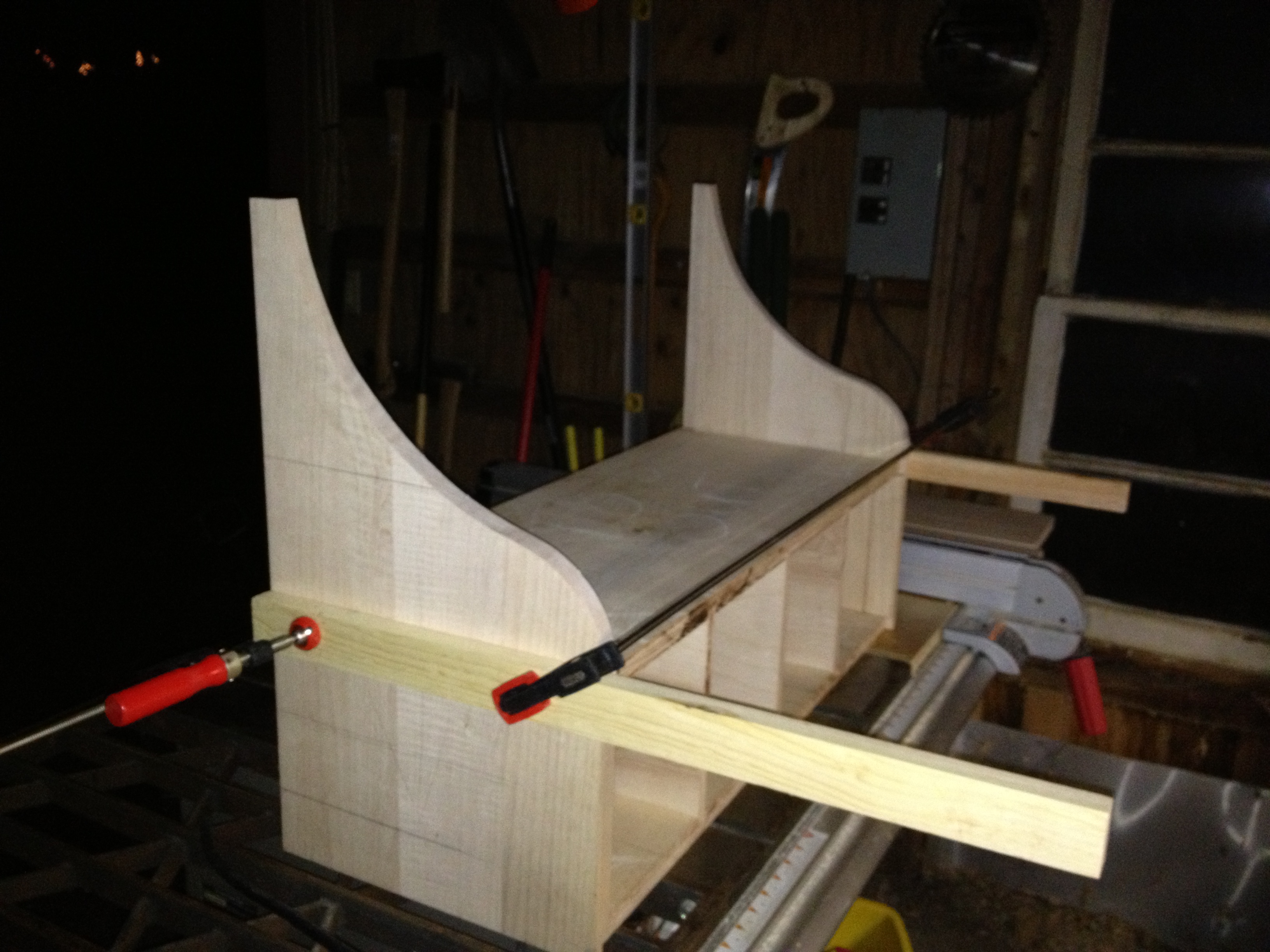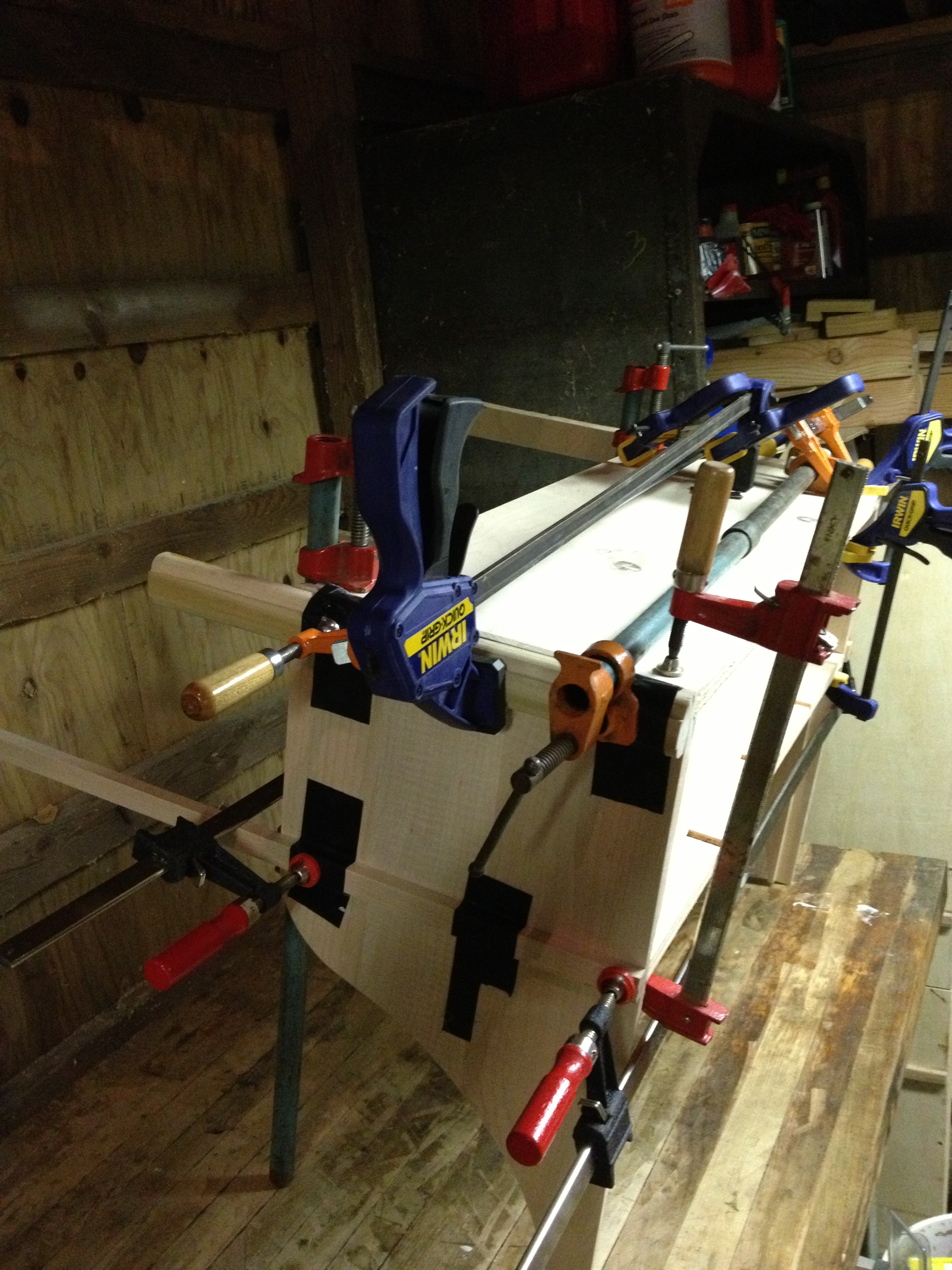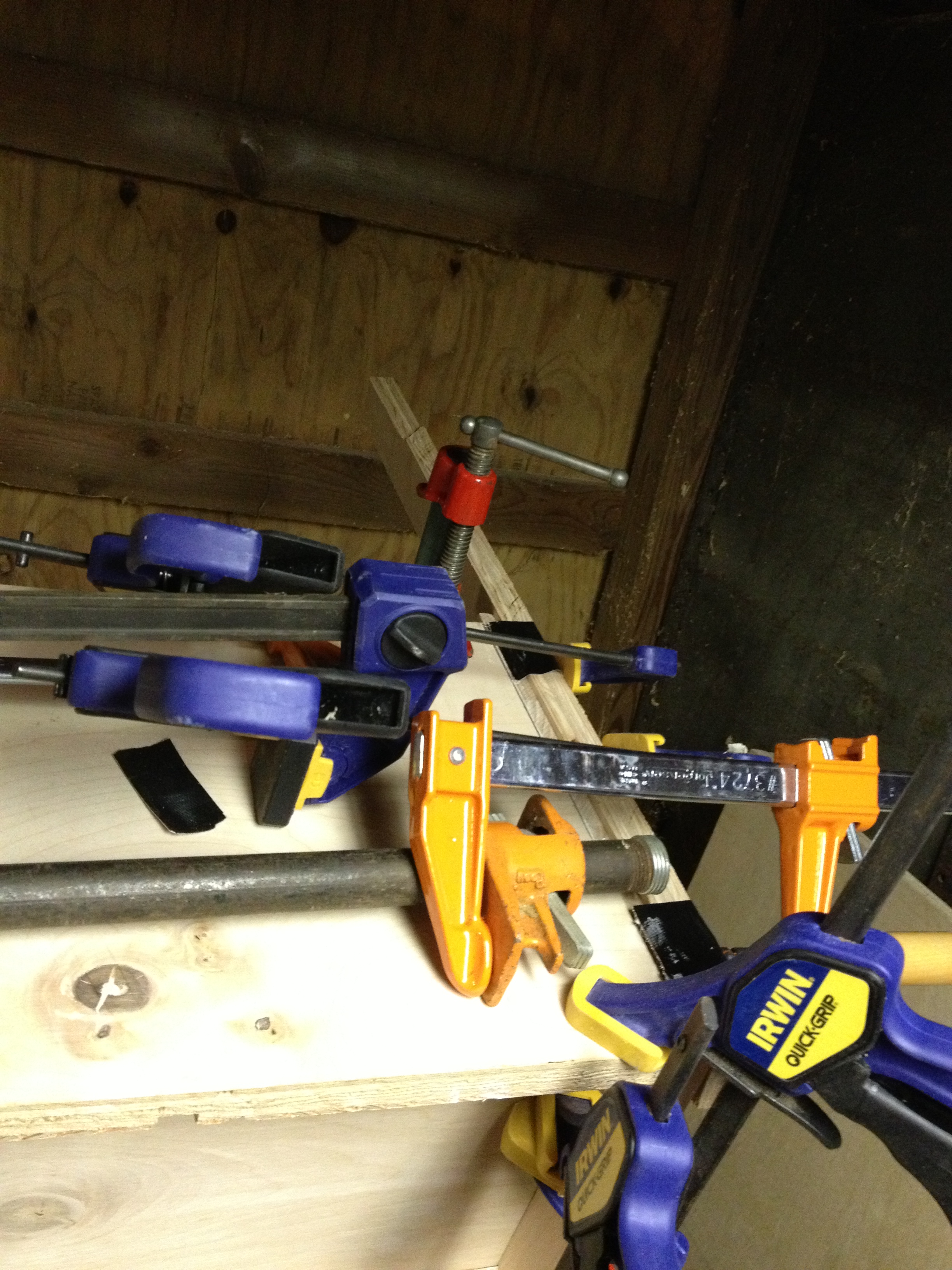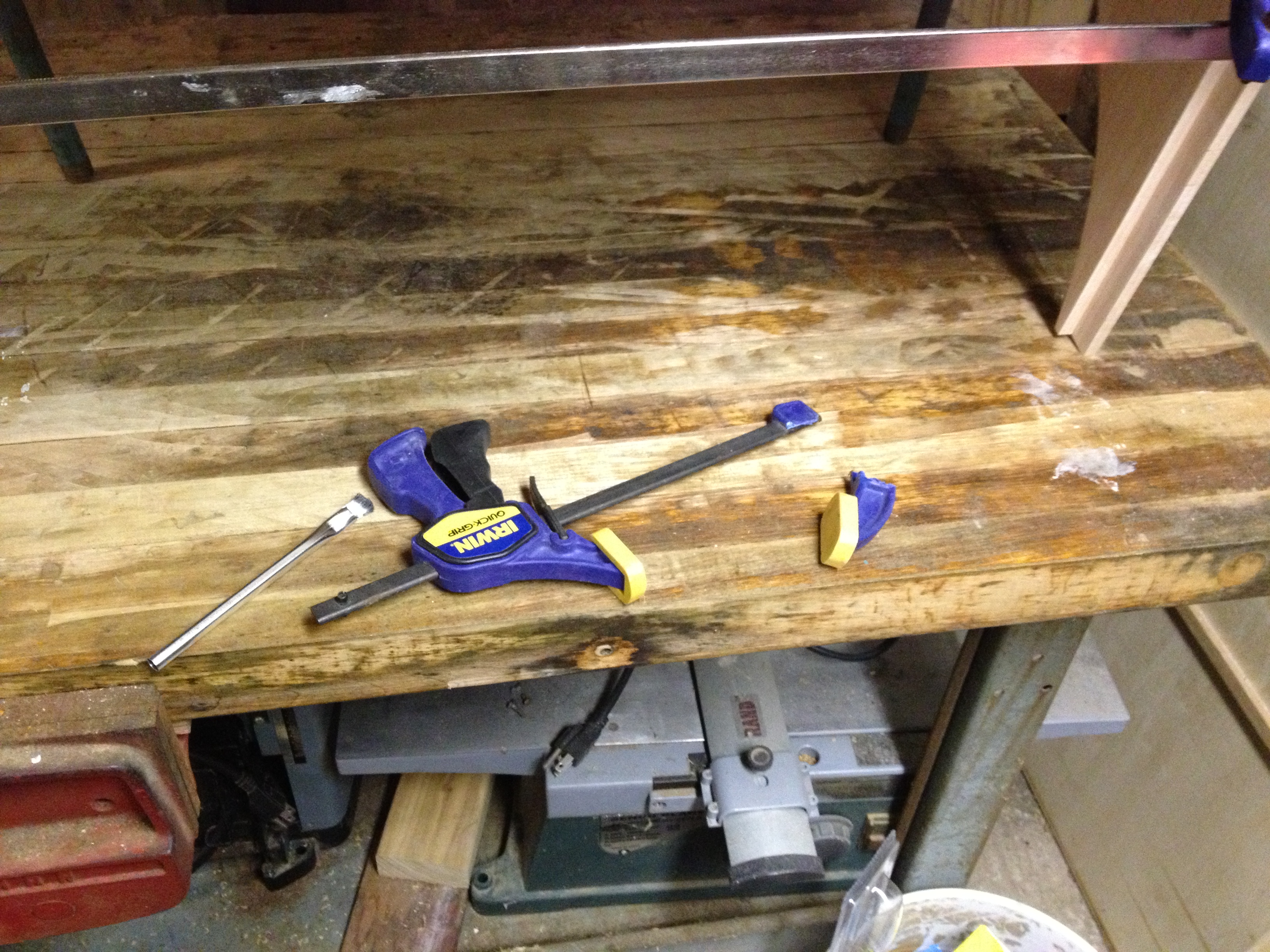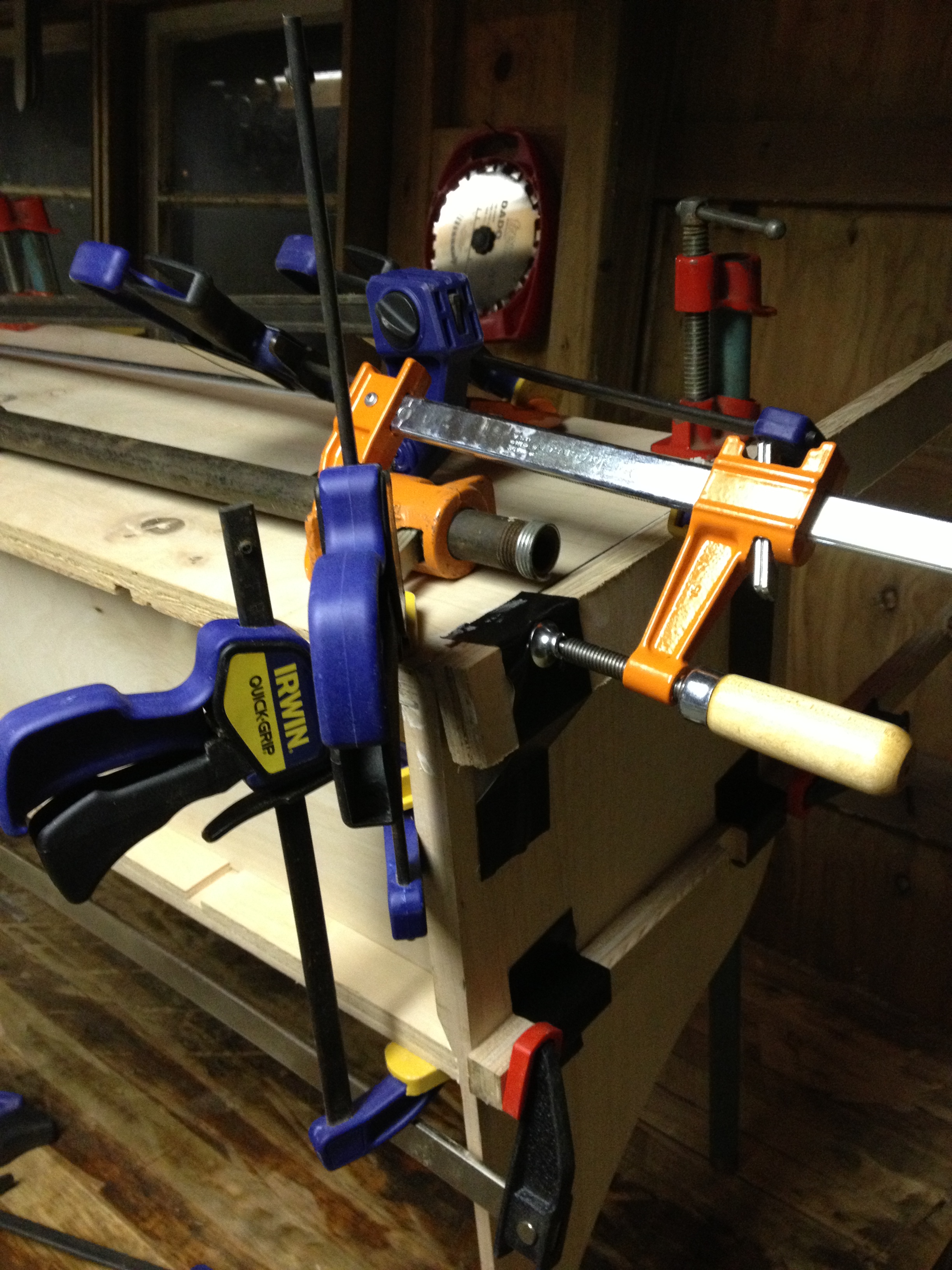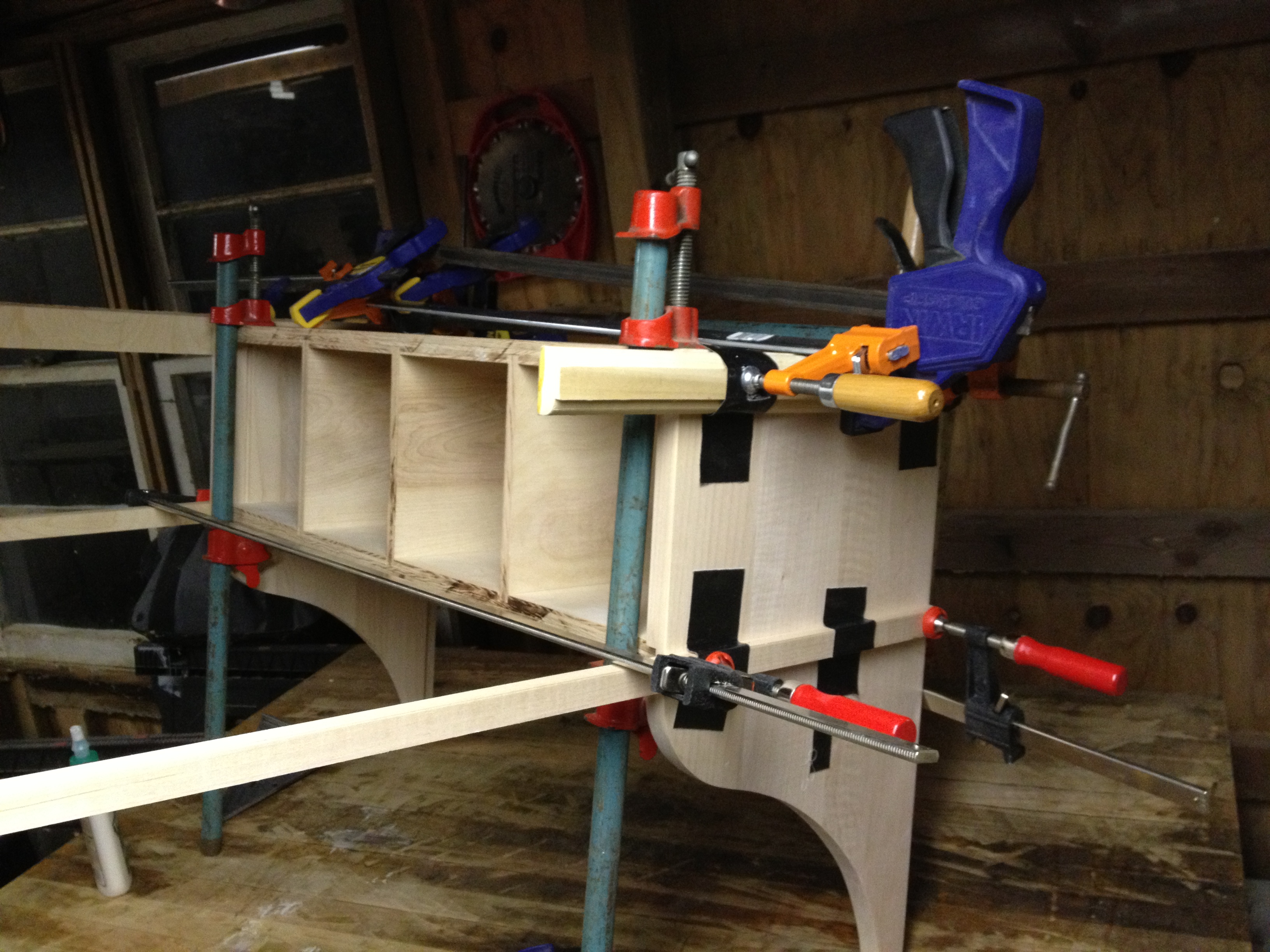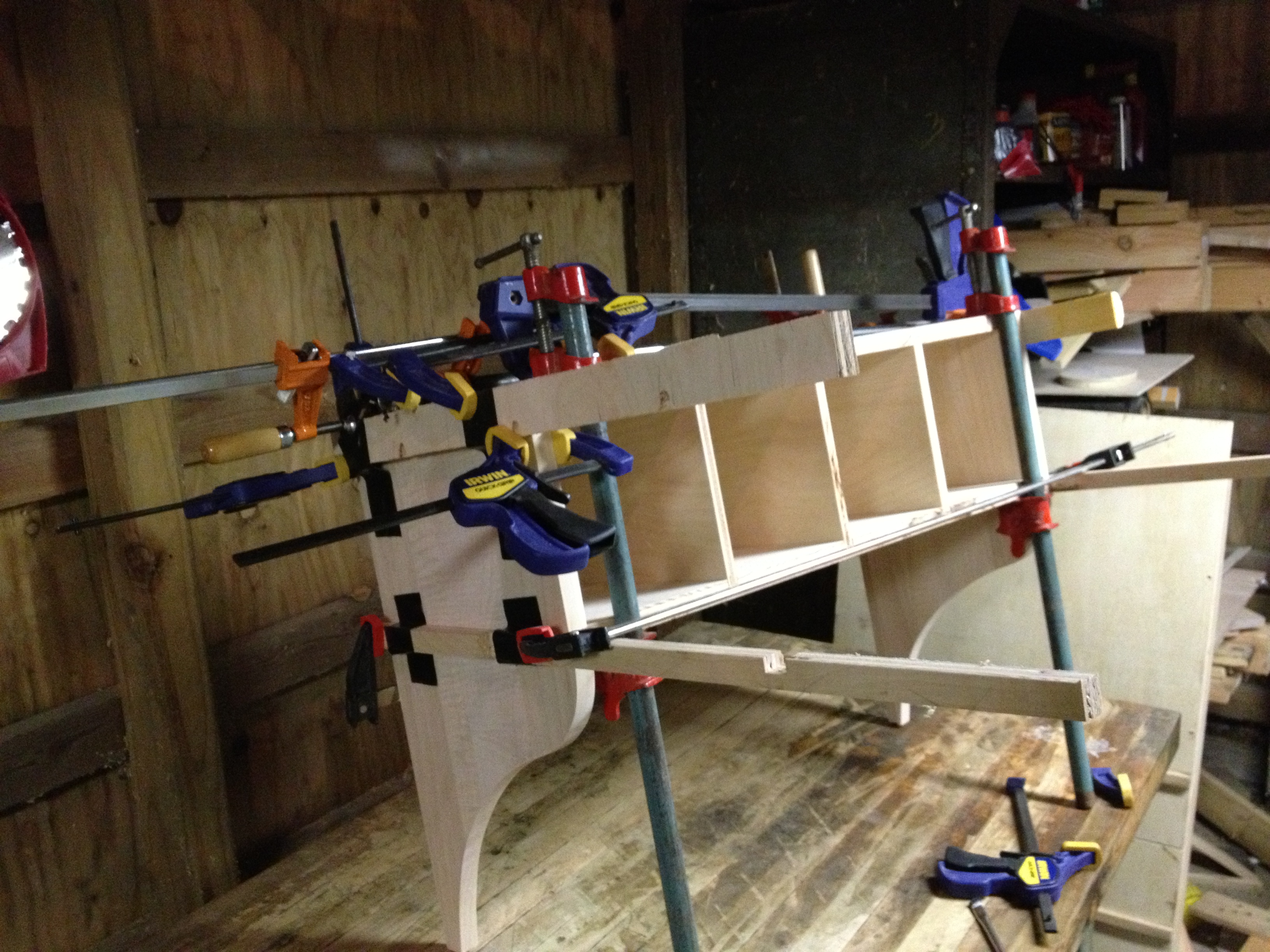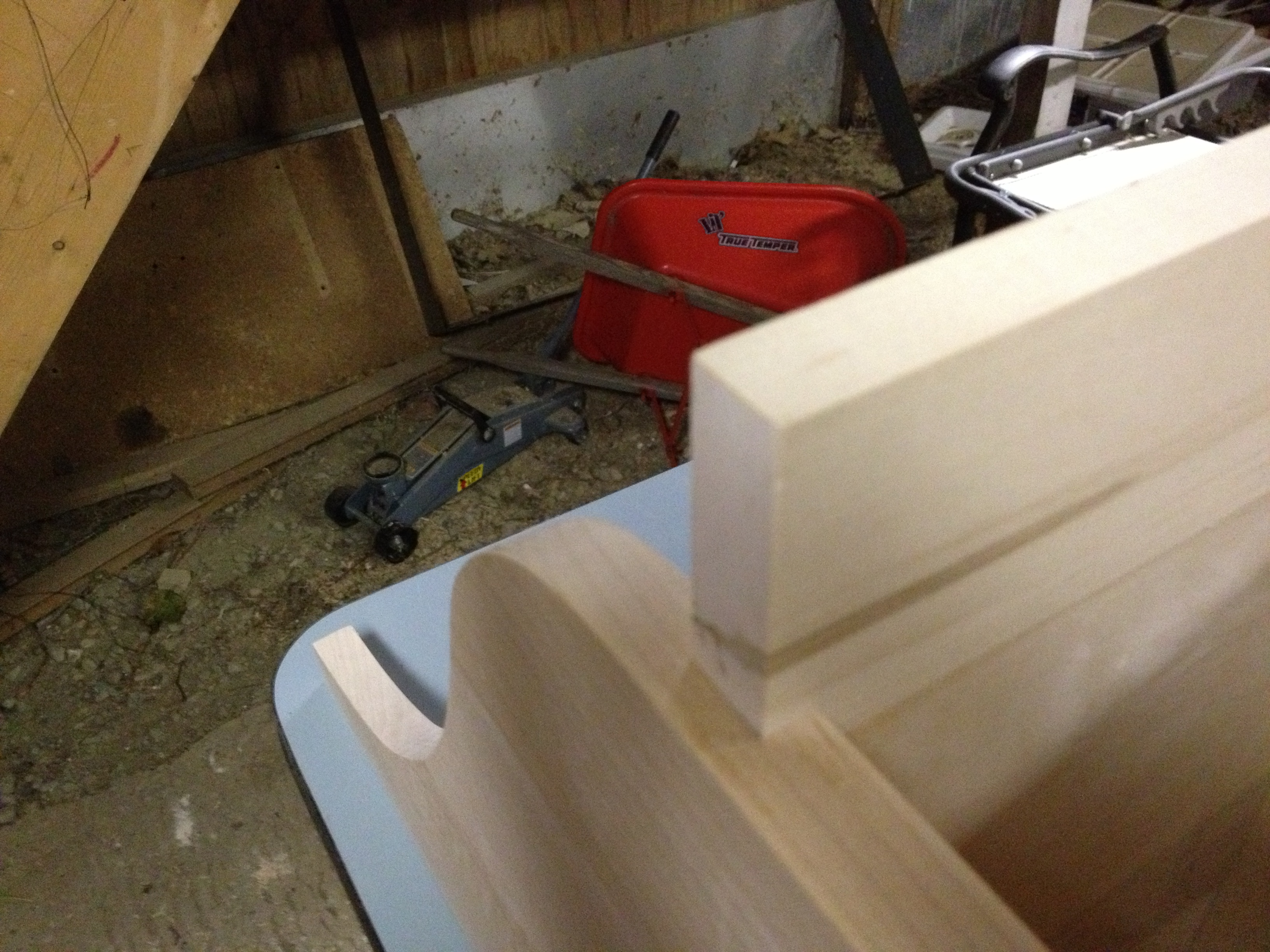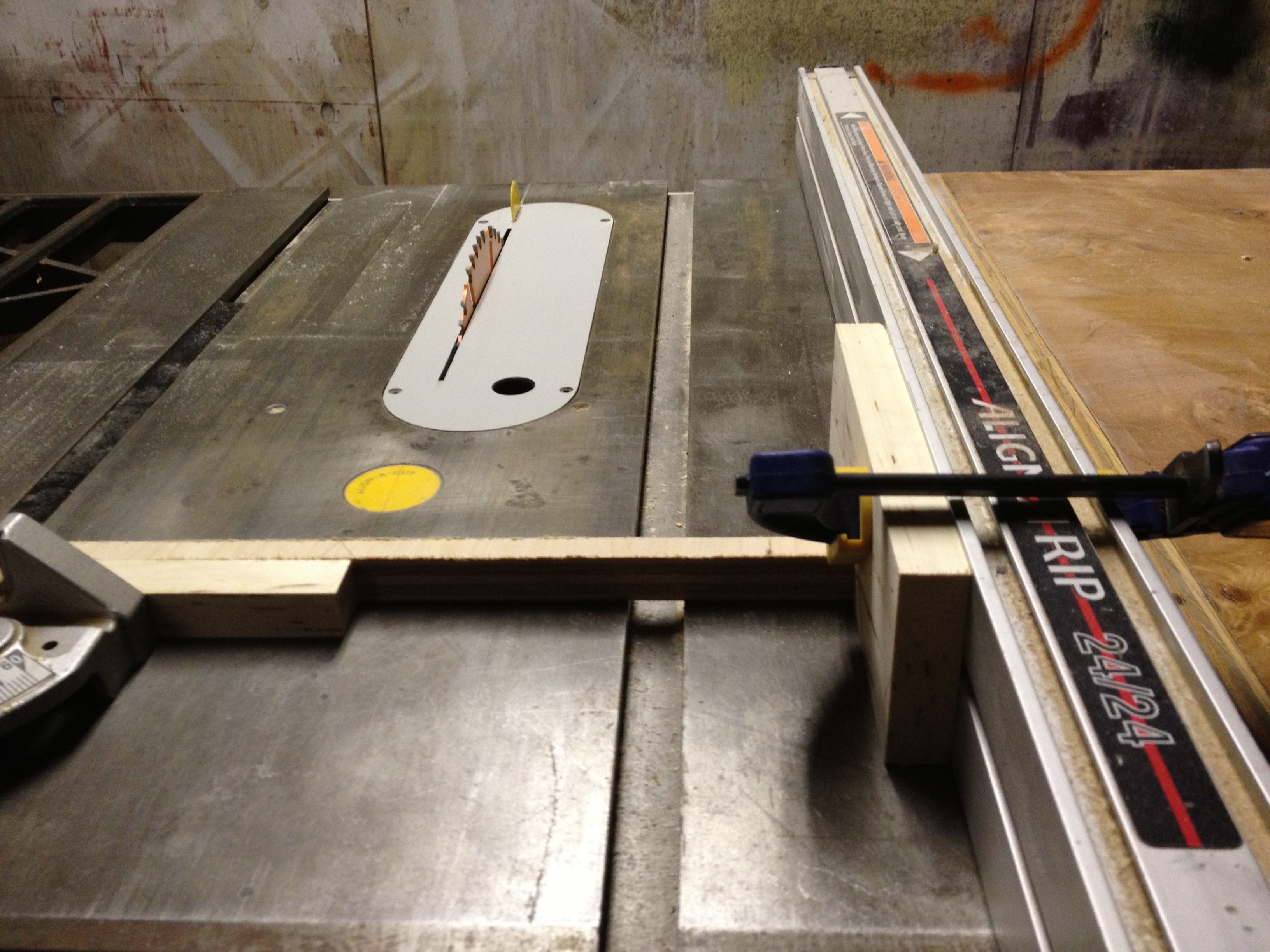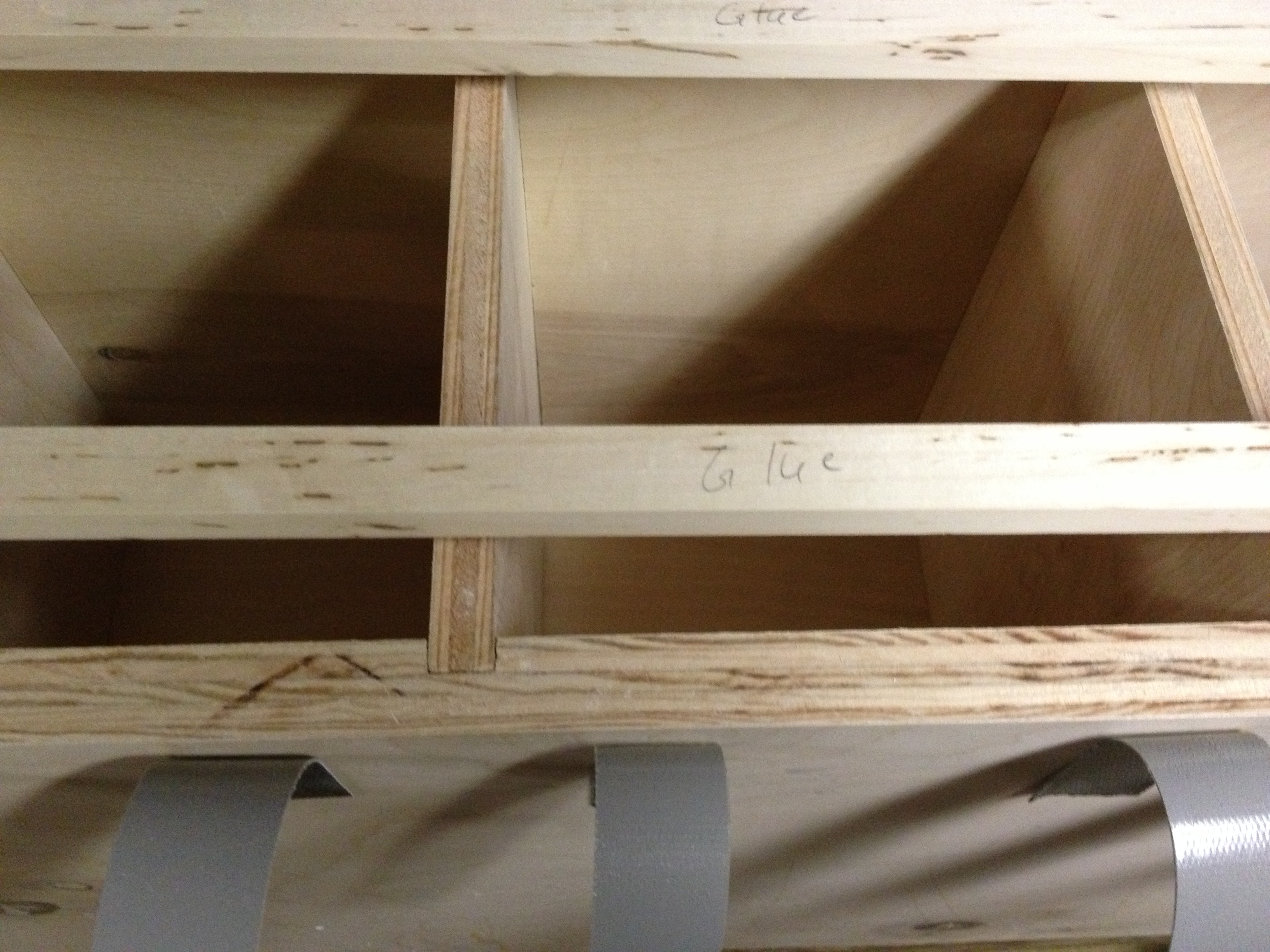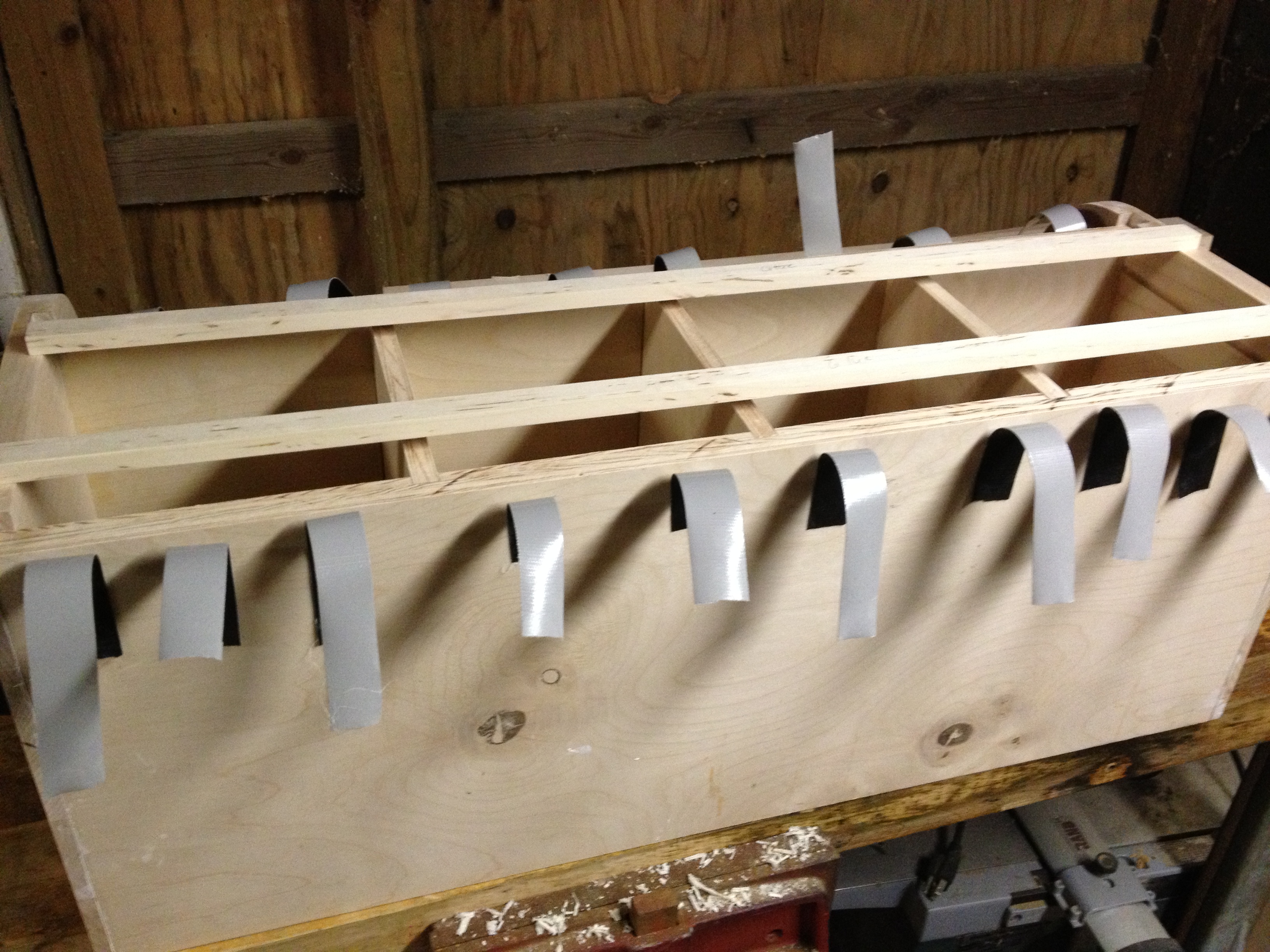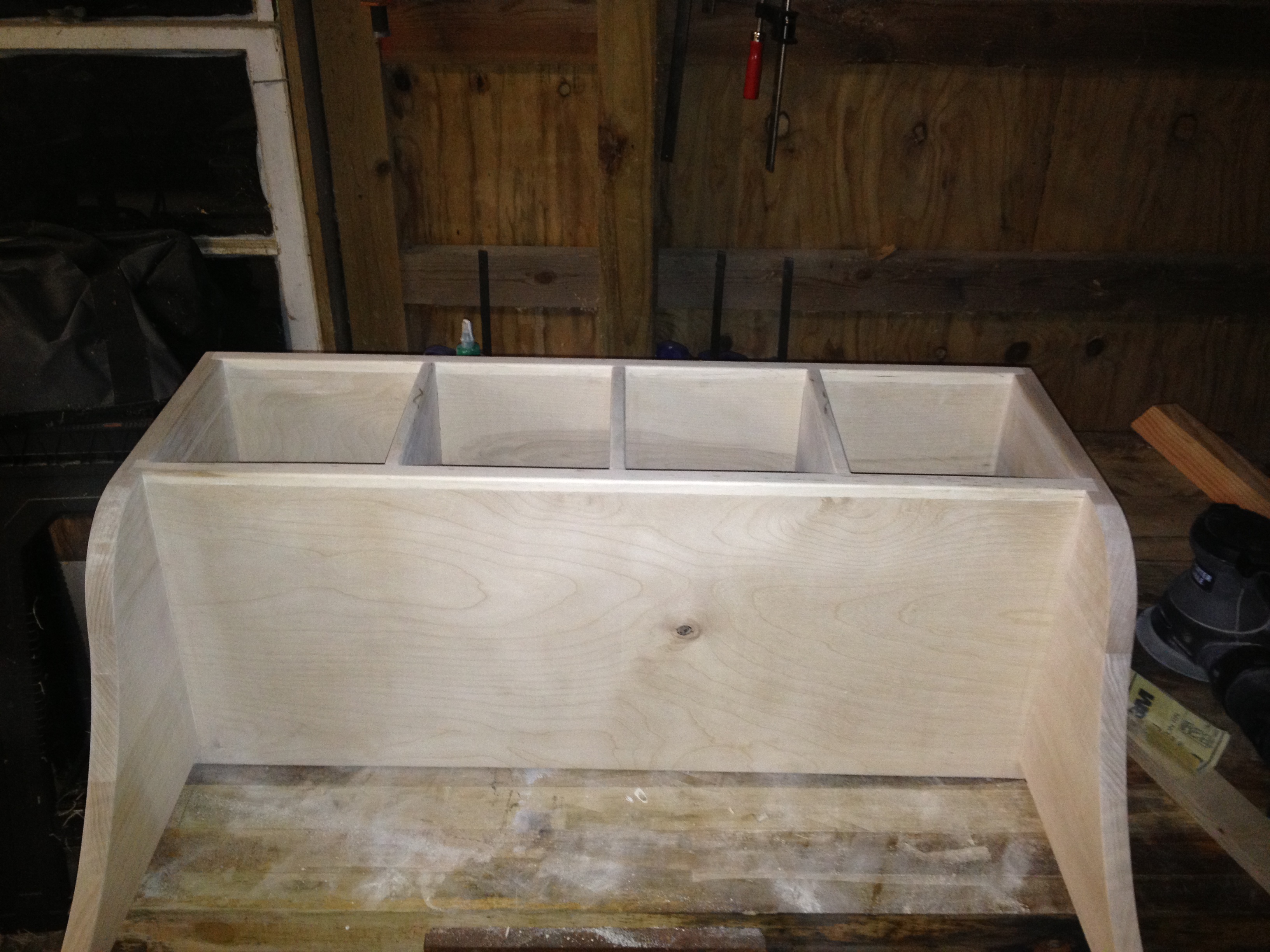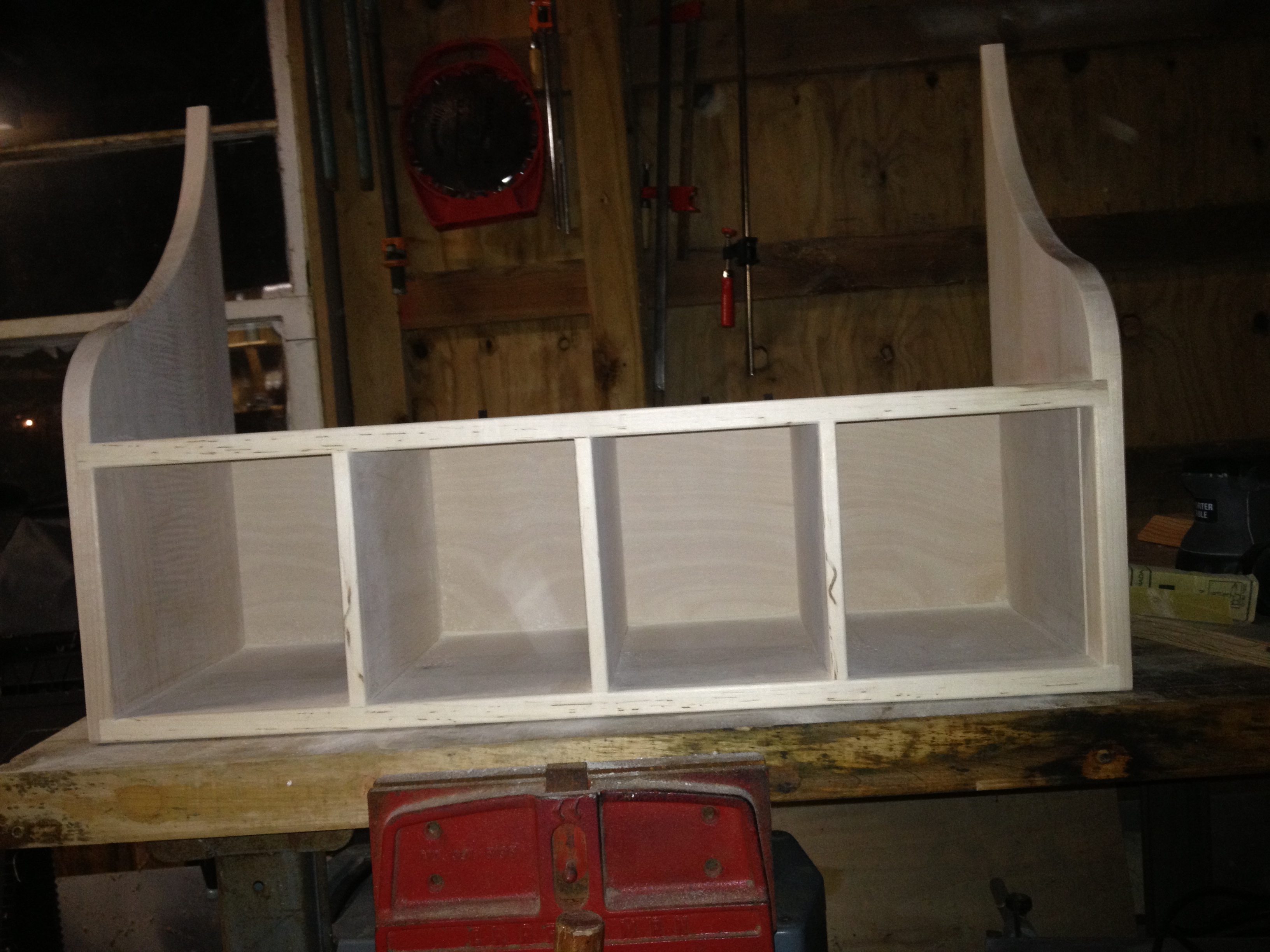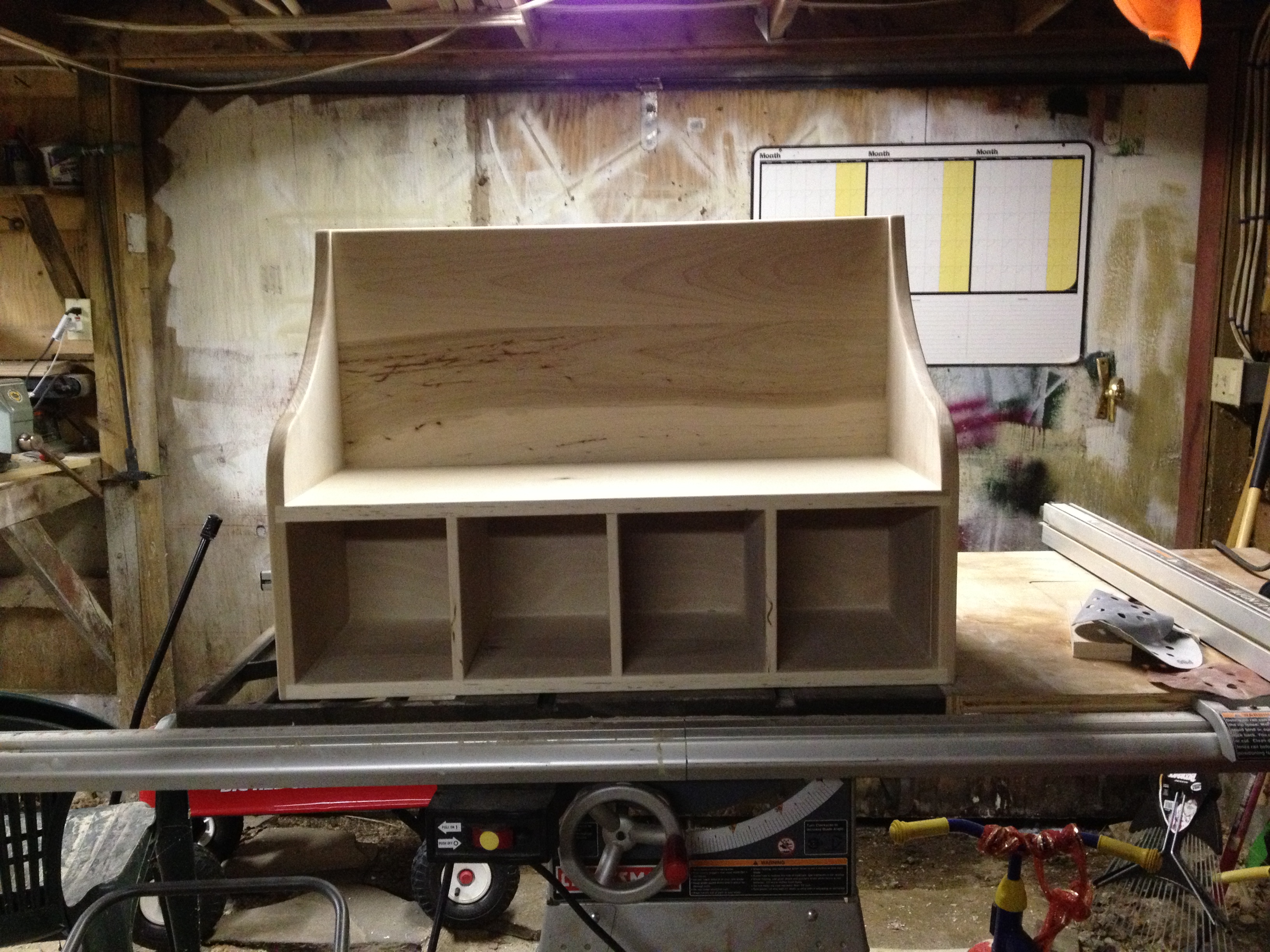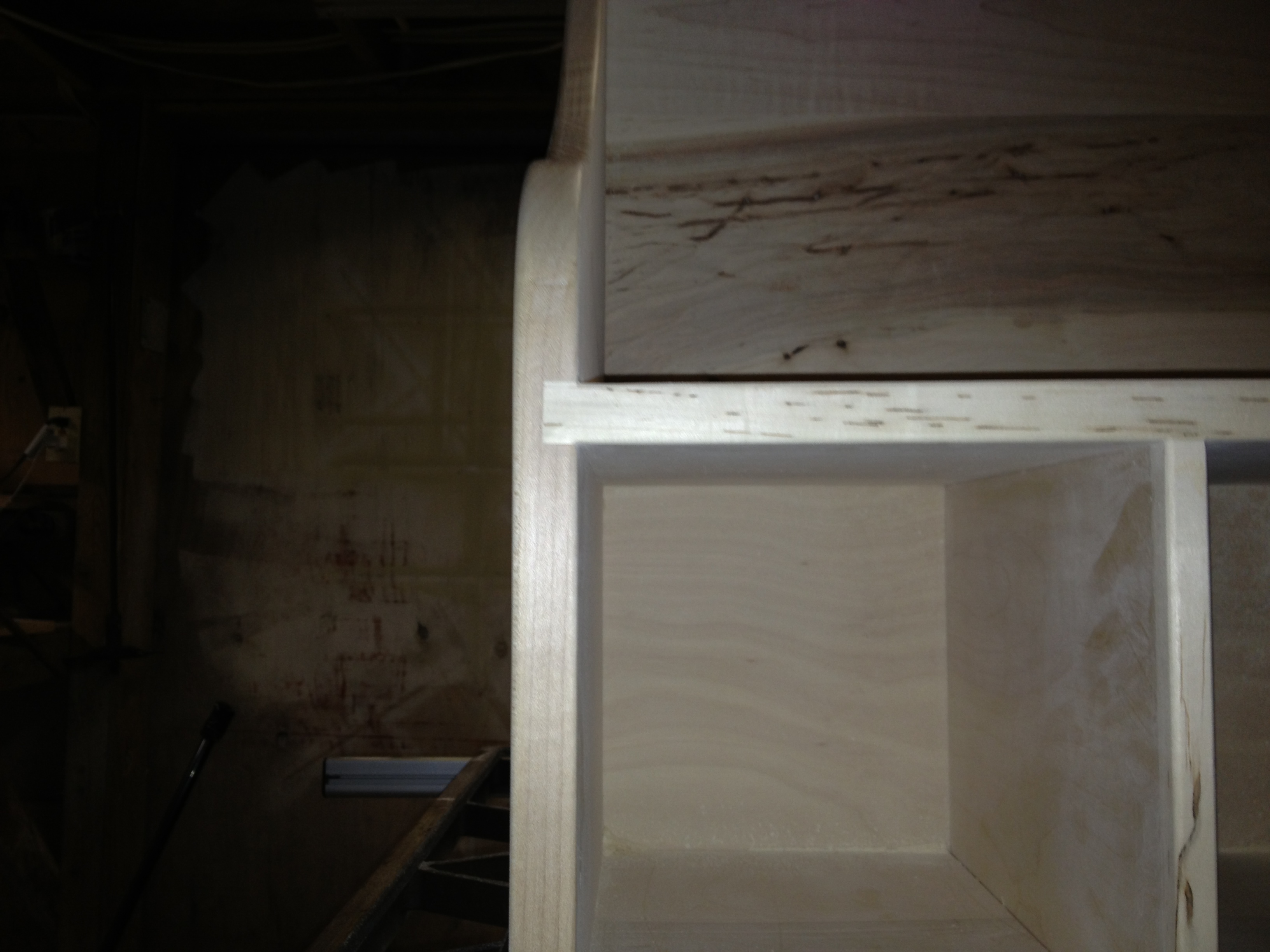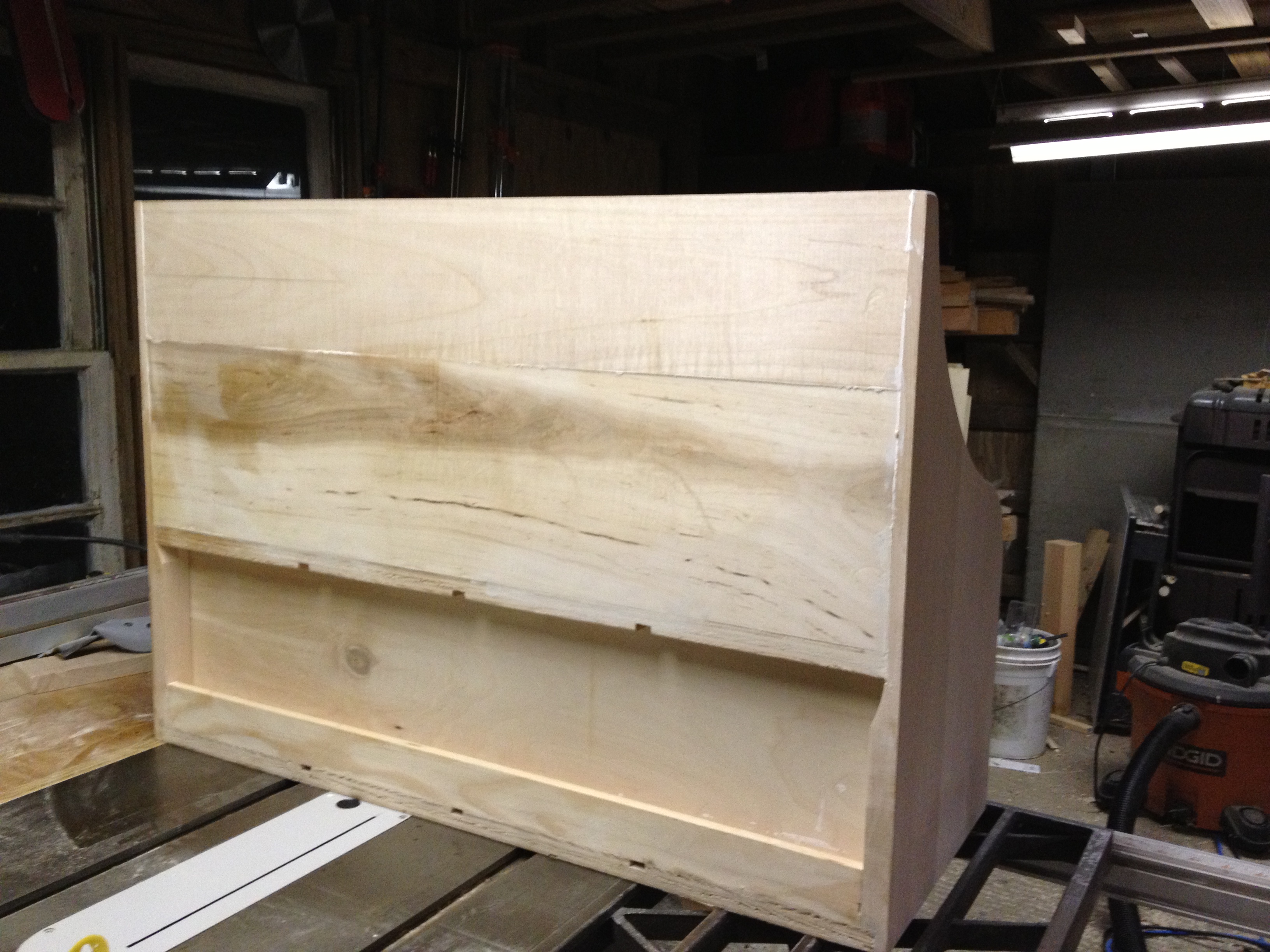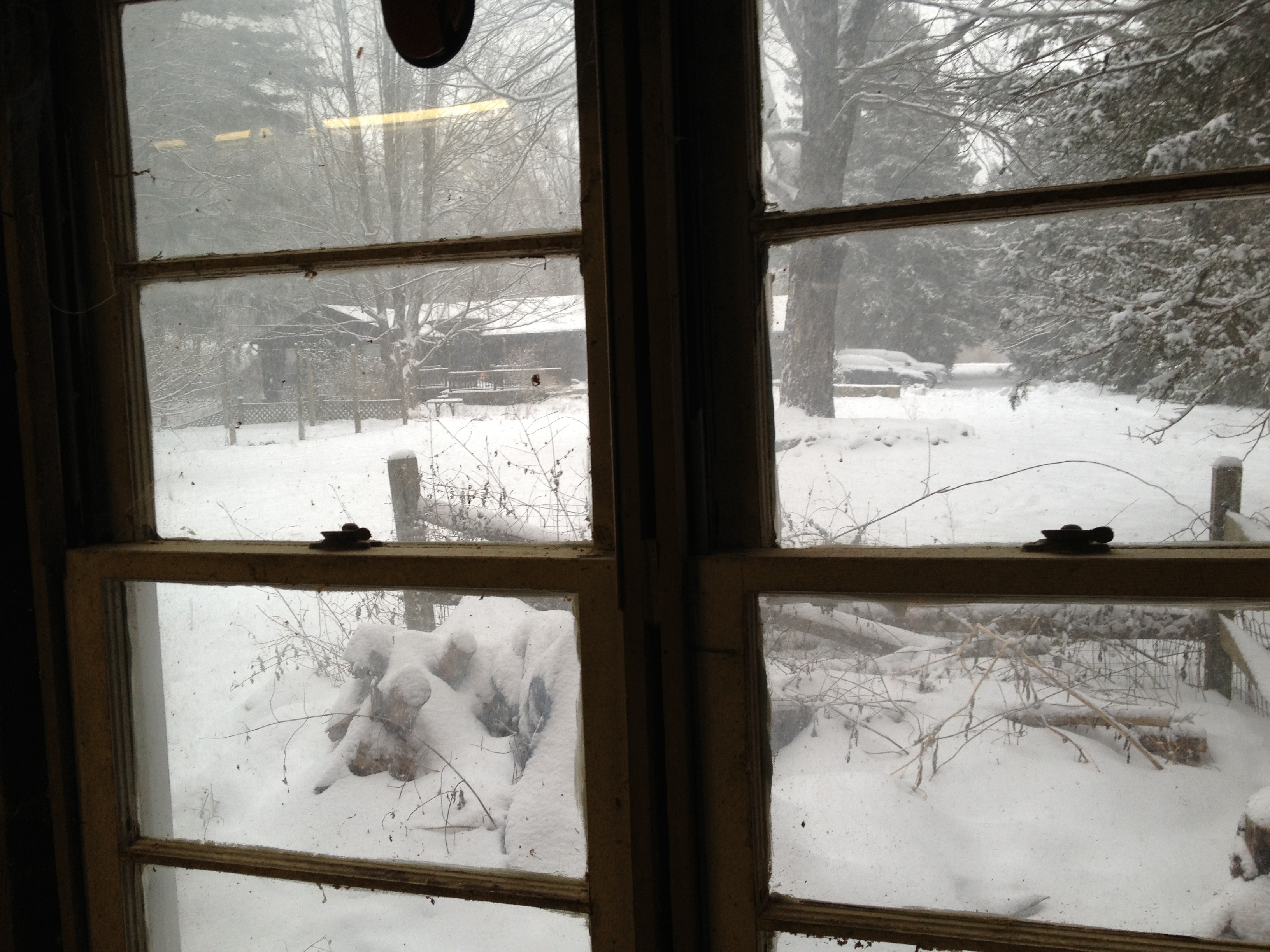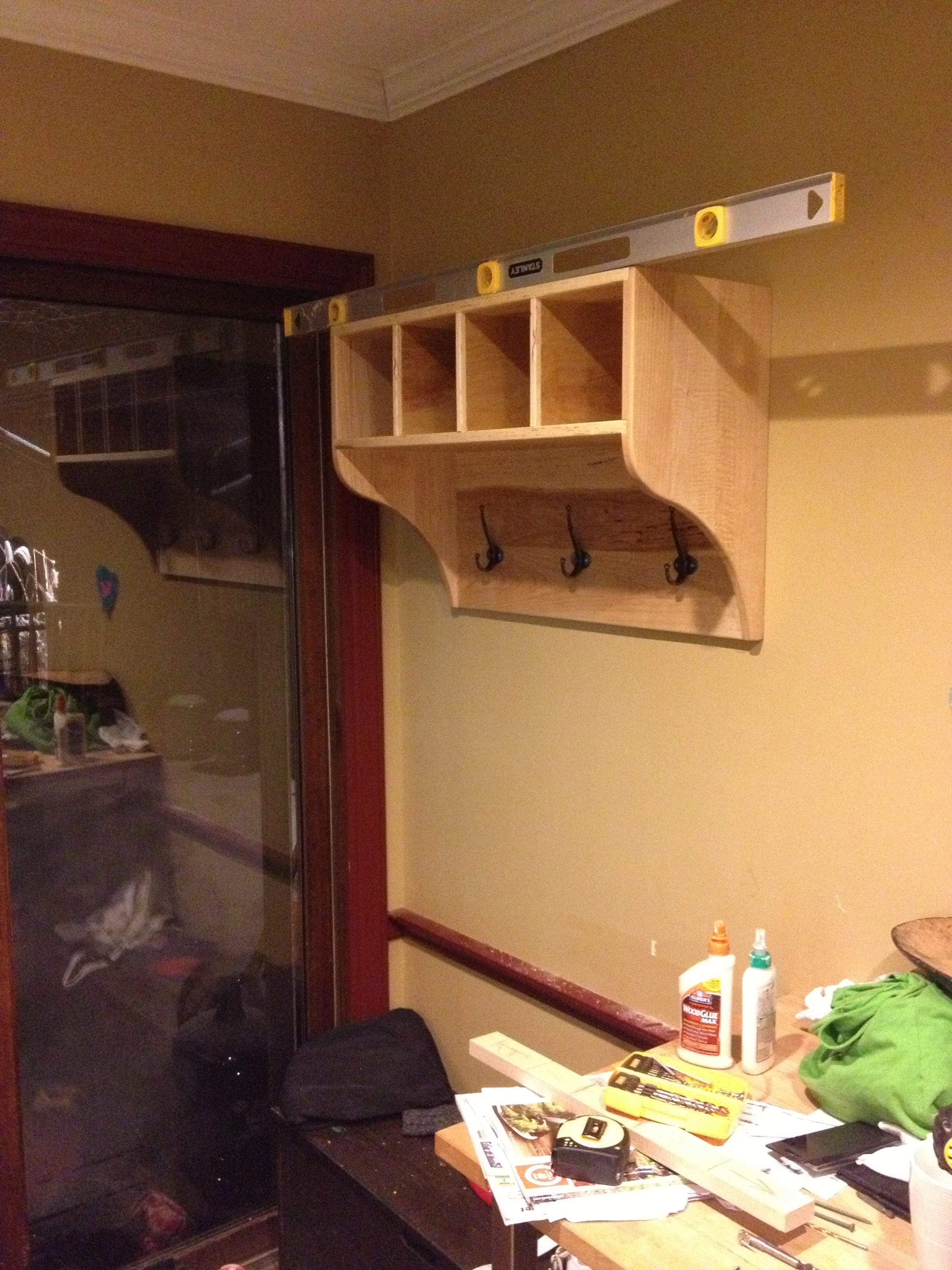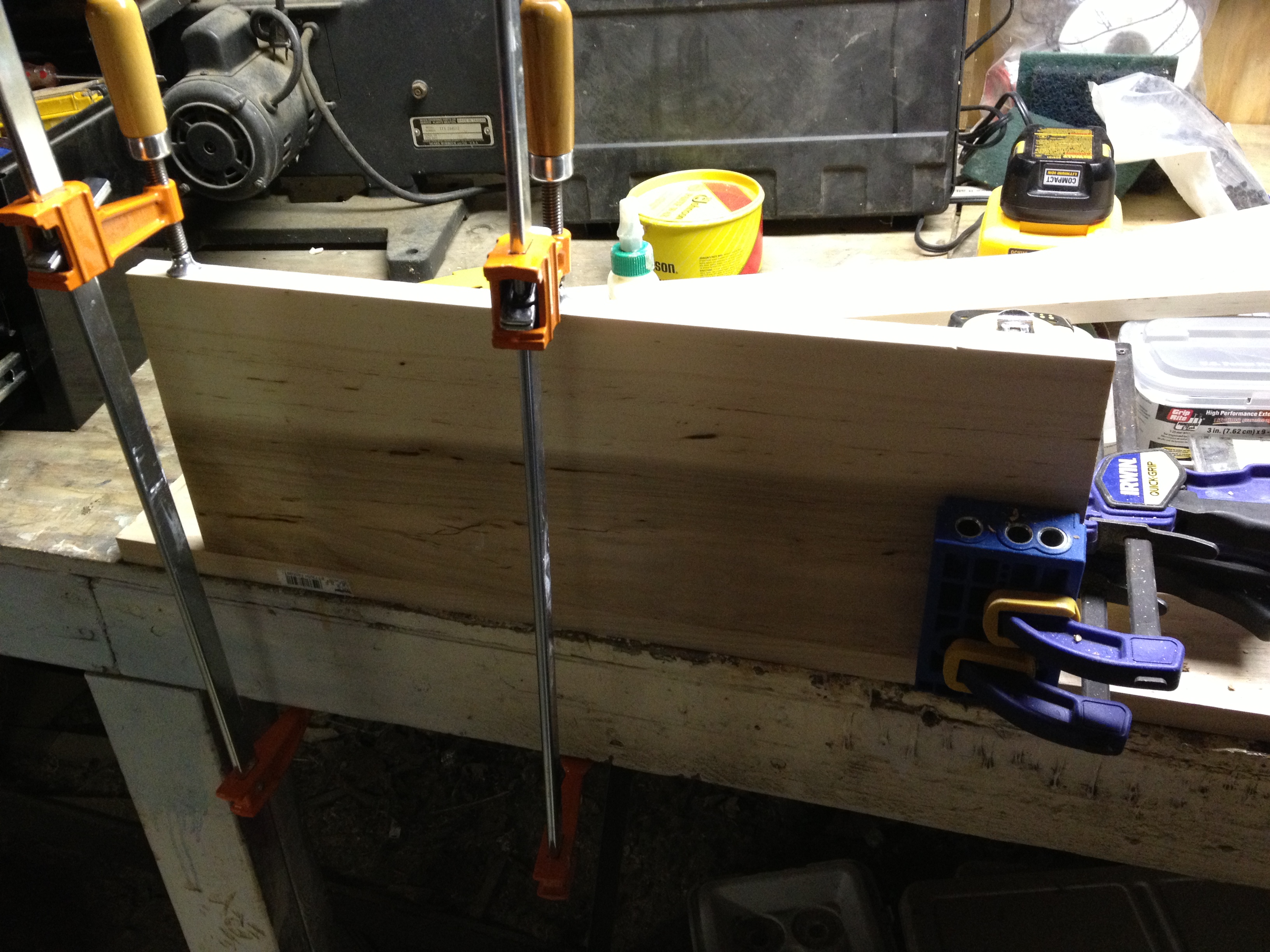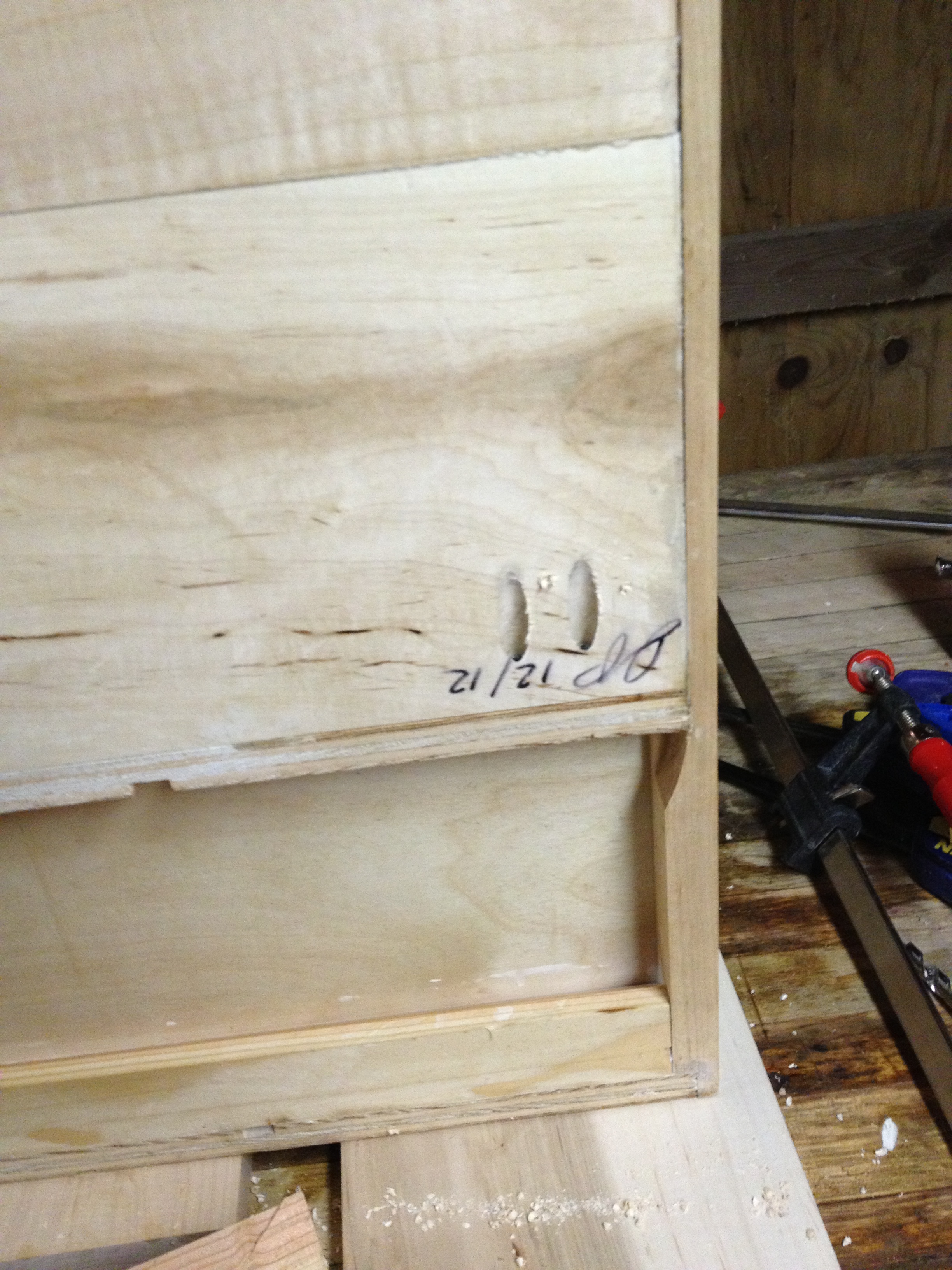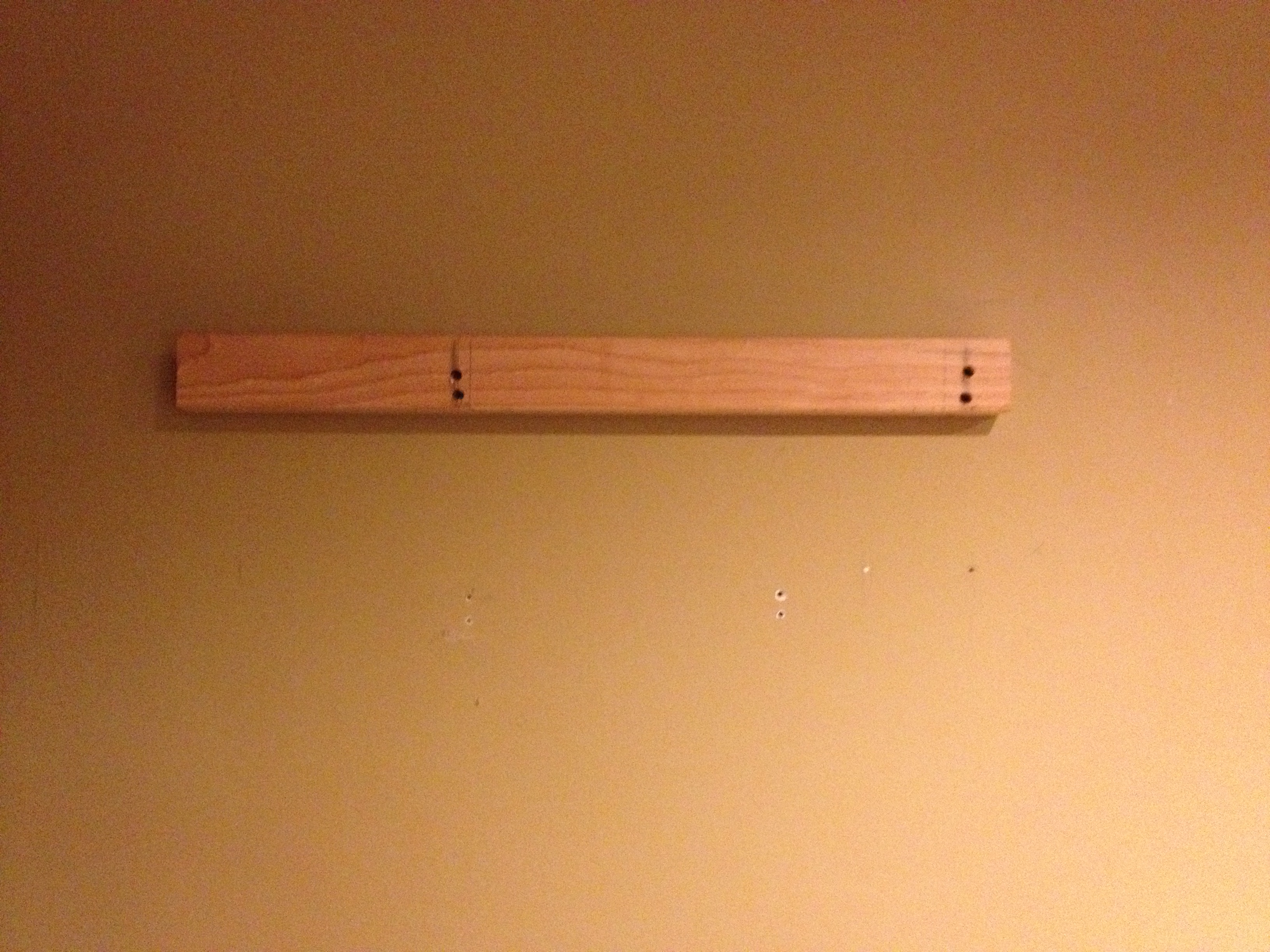TLWR; Photo Gallery
Last winter I made a simple coat rack out if a 2″x4″x3′ piece of maple. It served us well but there remains a raft of unused space and no end to coats, hats, scarves, gloves, and rain gear looking for a place to belong.
A shelf incorporating 4 cubbies and coat hooks seemed to be just the answer. Or at least the first half of the answer. Something along these lines: 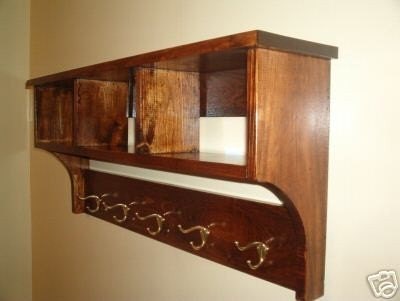
My drawing skills are second only to my writing skills. I did manage to do enough to decide the final dimensions and materials.
Materials:
- 3/4 Birch plywood for the top and bottom of the carcase.
- 1/2″ birch plywood for the cubby dividers
- 1/4″ birch plywood for the backing in the shelf
- 1″ Maple boards for the sides and backing board beneath for the coat hooks
- Plane down some 1″ thick maple for the face framing
Dimensions:
- 28.5″ wide
- 11″ deep
- 7″ inside height on the carcass (8.5″ edge to edge)
- Each cubby will be about 6.25″ wide
- The cubbies will be about 9″ deep allowing for the backing and french cleat for mounting
- 14.5″ tall sides (8.5 for the shelf, additional 6″ for the coat hooks)
The top and bottom of the carcass will be joined to the side pieces with dadoes and glue. The dividers will also be seated in 1/4″ deep dadoes. The hook mount will also be seated in rabbits and glued into the sides. A french cleat will be employed for wall mounting.
I thought by using the plywood for the shelves I could easy concerns with wood movement…well that was just ignorant. In reality that created more issues/concerns with wood movement as the side panels of solid maple will “grow” as the humidity increases and the plywood bits will not…. Hopefully with the small size of this piece I will not get surprised in the summer but only time can tell.
That’s about the extent of my planning. The rest will be sorted out during the building.
On day 1 I realized I failed to get a new ZCI for my new dado stack. As a result I went ahead and cut the dadoes for the shelf dividers with the router and a straight-edge. I decided to use an undersize bit and make the cut in two passes since I wasn’t about to buy plywood width bits. This didn’t go as well as planned, as you can see below. Hopefully this sloppy fit will be hidden/obscured in the mounting and face frame. I decided to order a ZCI and wait for it before attempting to the dadoes and rabbets on the side pieces.
I used a scrap 1/2″ oak board left over from the spice rack project as an auxiliary fence for the dado stack. Probably not the best plan but it worked out well enough, I was very careful to ensure that I didn’t bury the dado stack to deep and, thereby, clipping the fence. I made many, many, many test cuts to get the depth and width where for a nice snug fit for the plywood shelves. On my first dry fit I also noticed that I put the rabbet for the shelf backing panel on the wrong side of one side panel. This was the result of trying to make the cut without resetting my fence to the other side of the dado blade. Stupid.
To set the inset depth for the back panel rabbet, used the wood chosen of the cleat and set it between the fence and the blade. This ensured that the back panel would be flush against the cleat and the cleat flush with the back of the shelf. It worked out nicely. As you can see below. The one good thing about the aforementioned screw-up is that, while annoying, I can live with it in the final piece. And as a result a learned my lesson and executed the rabbet for the bottom panel correctly. Had I screwed that one up it would have cost me time and money.
It’s at this point that my all but open air shop hurts this project. The weather went quickly from cold to less cold and rainy over a couple of weeks and put some twist into my boards. Rather than dealing with this, it wasn’t much (so I thought), I kept going and figured that the clamping and glue would resolve the issues. As you will see, while not a catastrophe (yet anyway) it was probably not the best choice.
I used an off cut of the 1/4 baltic ply to make a template for the curve. I used an old paint can and wooden yard stick with a pencil hole drilled in the end to draw the desired shape of the curve. It wasn’t very efficient but I ended up with a pleasing shape. With the template cut it was just a matter of marking it on the side panels, double checking the orientation, triple checking the orientation and rough cutting the curve with a jigsaw. From there I attached the template to the panel with double sided tape and using straight bit with a top bearing mounted in the router table cleaned up the side panels. Not sure what happened but one of the side panels ended up having a very thin wall between the curve and the rabbet (I blame the twist I didn’t deal with earlier) so after cleaning up the curve with ROS I cut about 2″ off the bottom of both panels.
Finally ready for the glue up. During the dry fit I realized that, along with more clamps, I also needed an extra pair of hands to hold the cauls up while I positioned the clamps. In lieu of extra hands I used a little gorilla tape to pre-attach the cauls. Identifying and resolving these types of issues are so much easier in the dry fit than during the glue up. It’s a cliche but oh so true…you can never have to many clamps. I had to “link” some of my clamps to get pressure everywhere I needed/wanted it. Amazingly everything was pretty square. Although in the top I can see some “bow” in one of the side panels as a result of the aforementioned movement from the humidity changes. In an effort to defeat this “bow” with clamping pressure I broke a clamp. Thankfully I didn’t break/mar the shelf nor did I get all the bow out of the panel.
To cover up the plywood edges I fired up the 12″ planer, after finding the most interesting sections of the maple, and milled a piece of maple down for a snug fit in the dadoes, I ripped the strips to be a little “proud” so I could sand it down flush with the sides. I taped the shelf faces in place then measured and cut cross pieces to face the dividers, again going for a nice snug fit. Once all the pieces were cut to size marked the orientation glued and clamped, using the gorilla tape as a clamp, them in place. The following morning I sanded everything nice and flush with the ROS and some 80 grit.
The final piece is the solid maple board to go across the bottom on which the coat hooks will mount. Rather than buying a 12″ wide board from the big box store I opted to use 2 off cuts of some 8″ boards. This was a mistake. My jointer (nor my skill with it) is not up to snuff and, while I thought I had set it up correctly, I was unable to successfully use my router as a jointer. In the end I was able to get a satisfactory edge on both pieces but they weren’t completely parallel to one another and I am a little concerned that the joint will fail sooner rather than later. While attaching the backing the twist/cup of the side panels reared it’s ugly face once again. The end result was that I was unable to get a nice snug fit for the back. So once again I attempted to use the clamps to “squeeze” the side panel into the backing board. This was successful on the surface but the glue “popped” at the first sign of pressure. I used a syringe and got more glue in there and got it to “stick” but not for long as you can see later.
I don’t think I have mentioned it yet, but I hate sanding. I sanded the entire piece from 80, 120, 180,220, 320 using 600 on the end grain of the side panels. The finish was a 3 coats of Watco danish oil wiped on.
After mounting the unit on the wall, nice and easy with the french cleat, I loaded up the family coats/jackets/snowpants and as feared, the right side of the back panel “popped” loose and dropped down about 1/8 inch. I took it back to the workshop and sunk 4 pocket screws into the panel. 2 going up into the bottom shelf and 2 going horizontally into the side panel. I am not sure it will be enough to hold it through the years but hopefully it will hold until I have more skills and time to make a bigger and better version.
